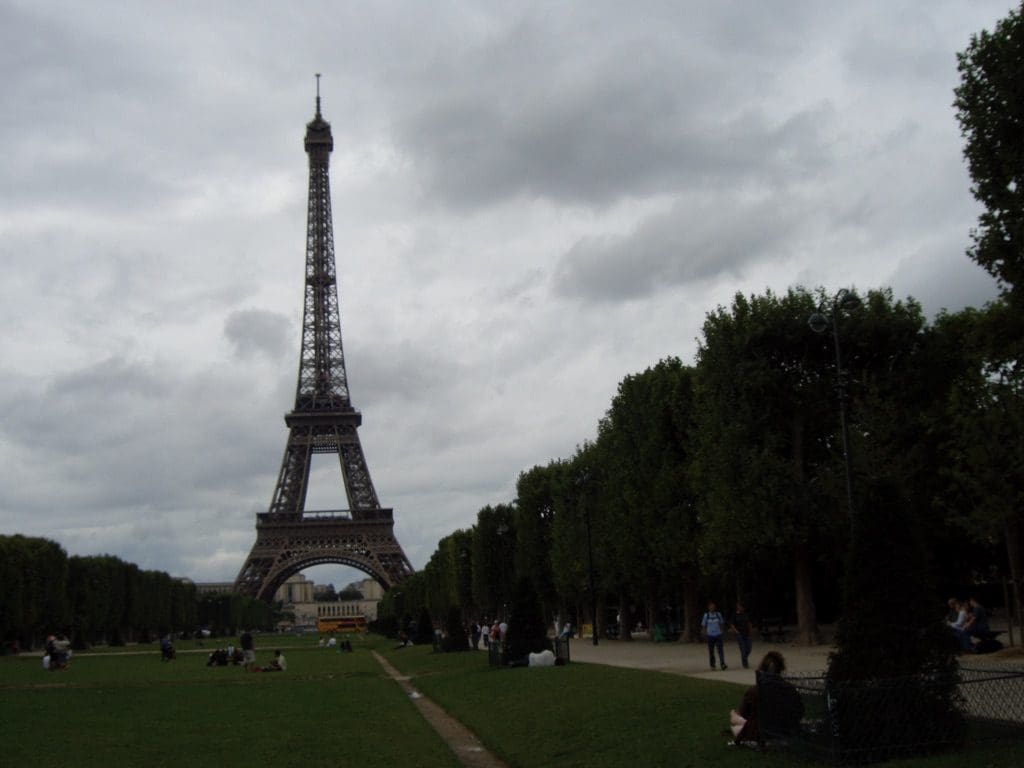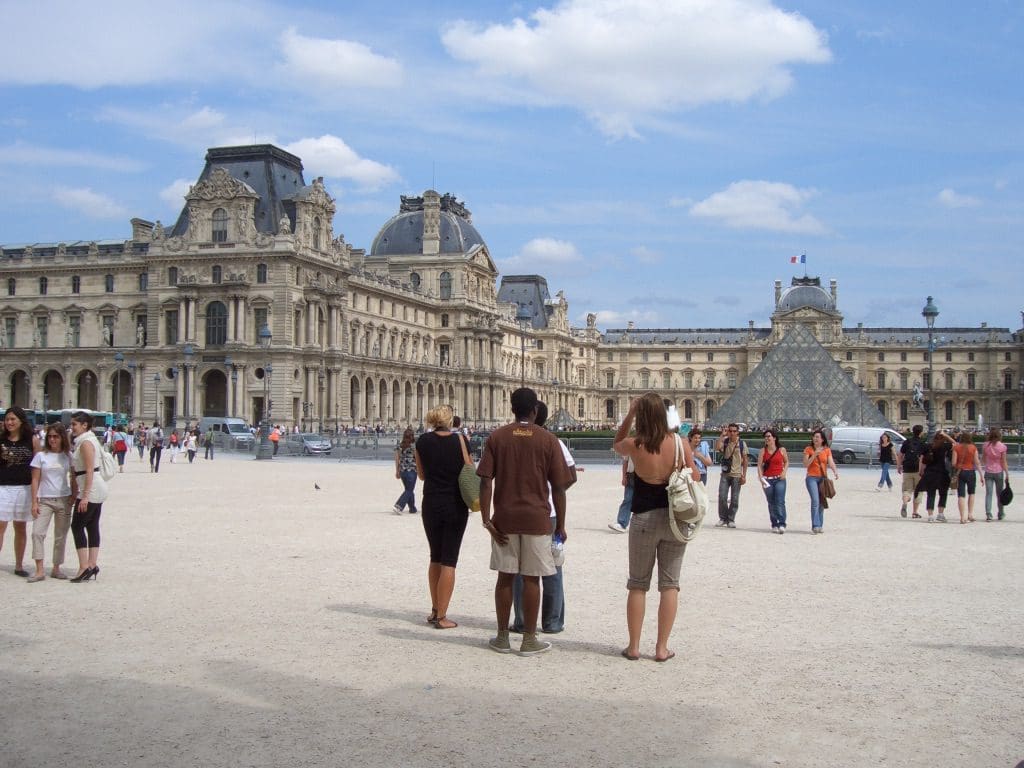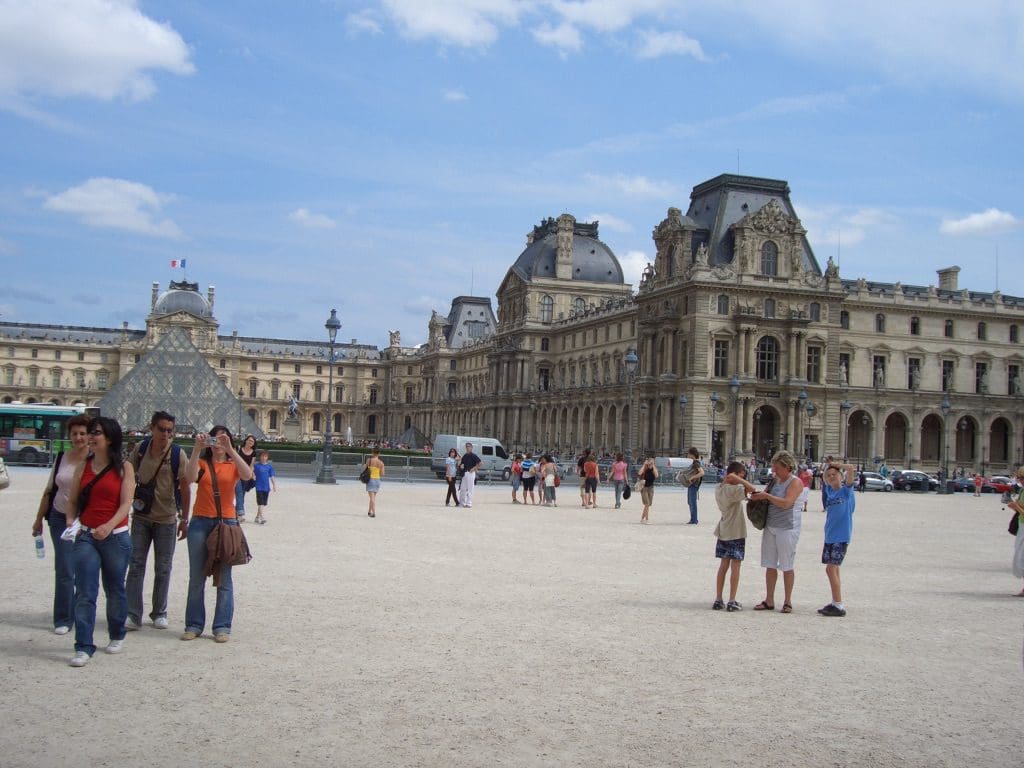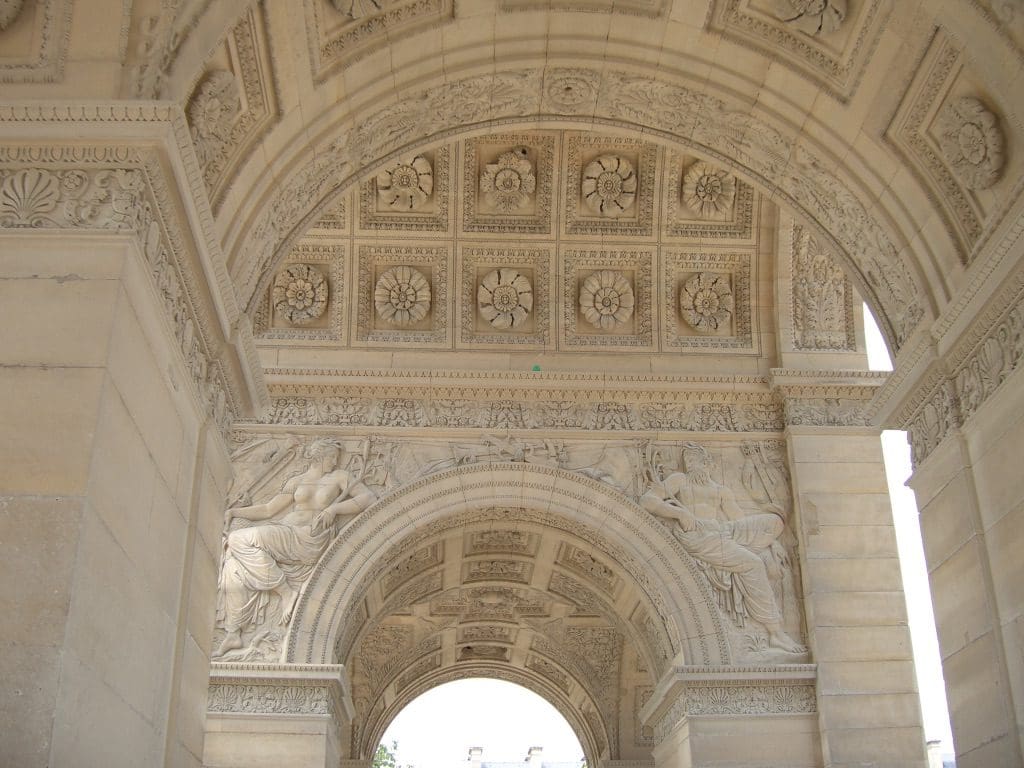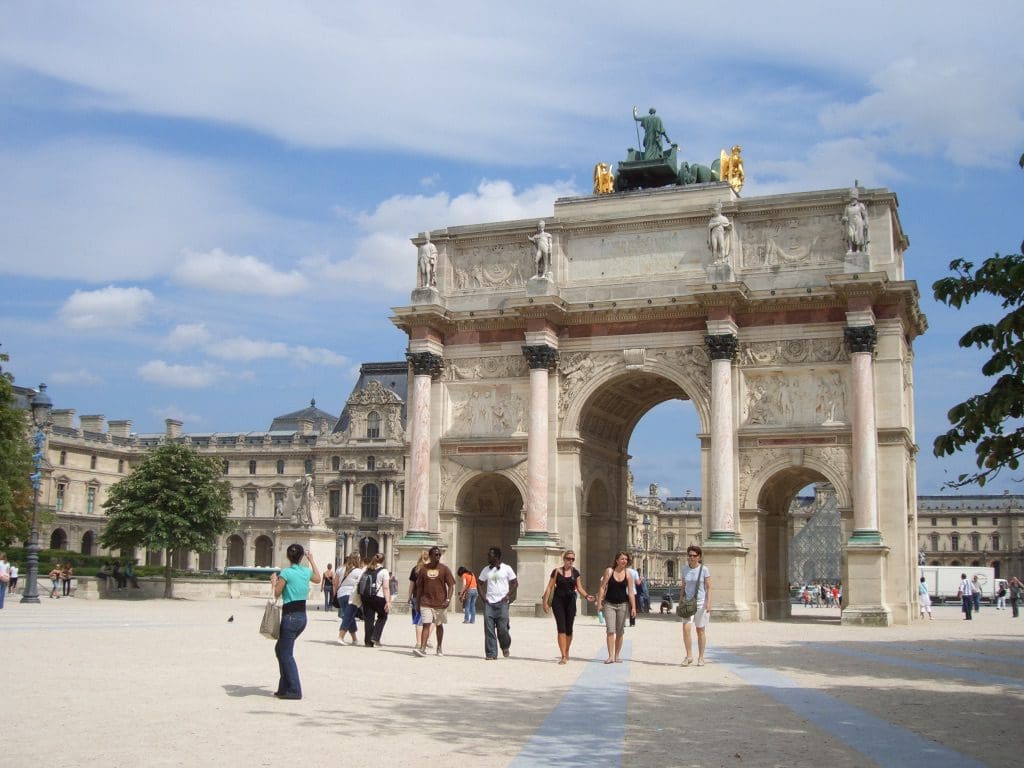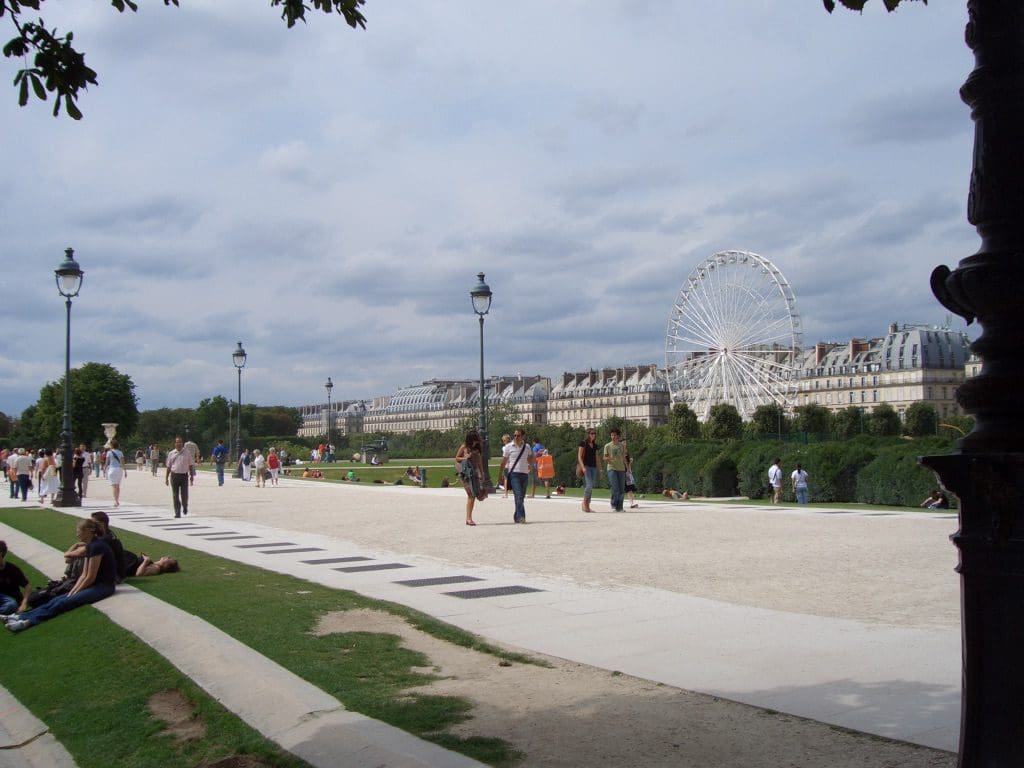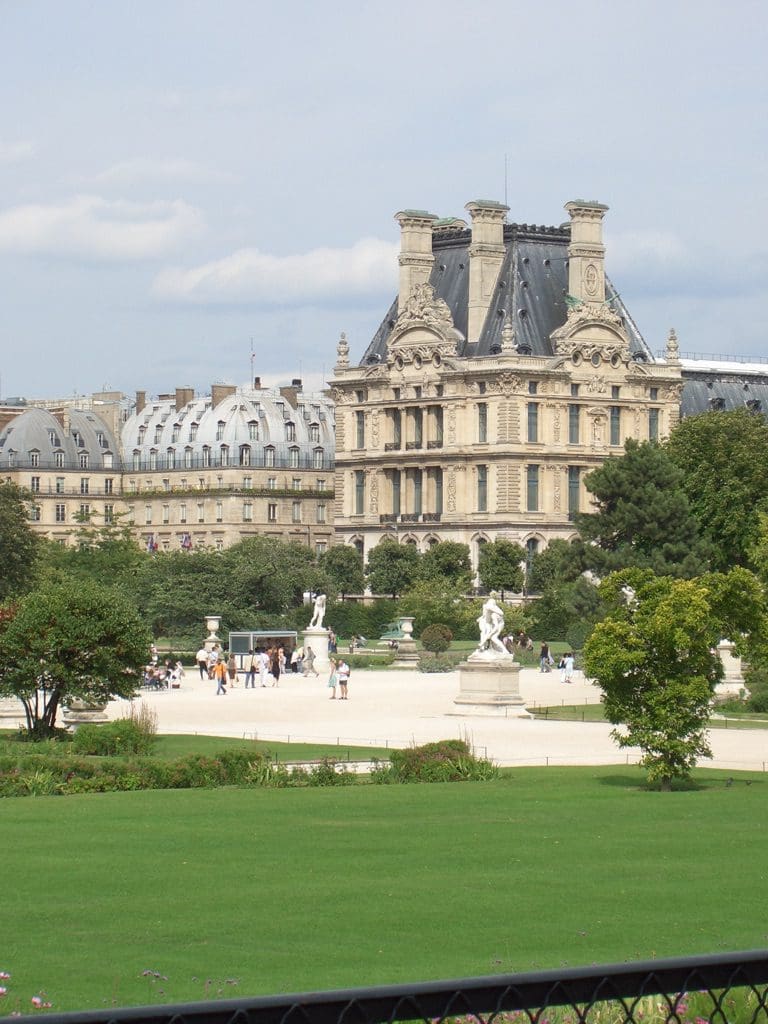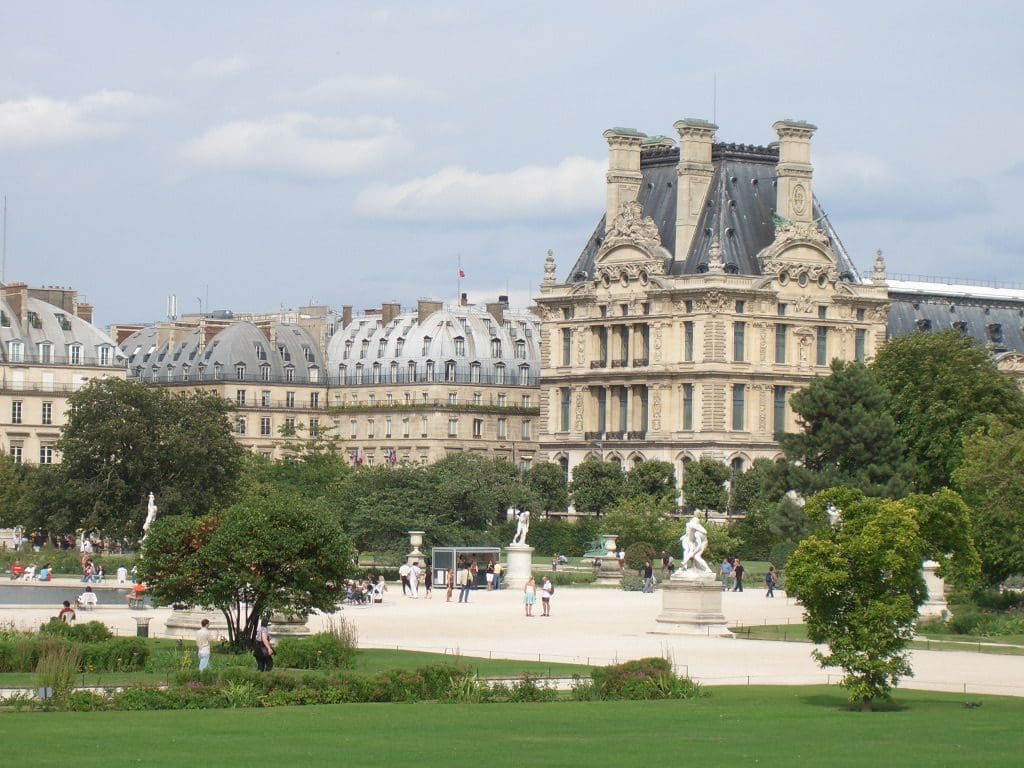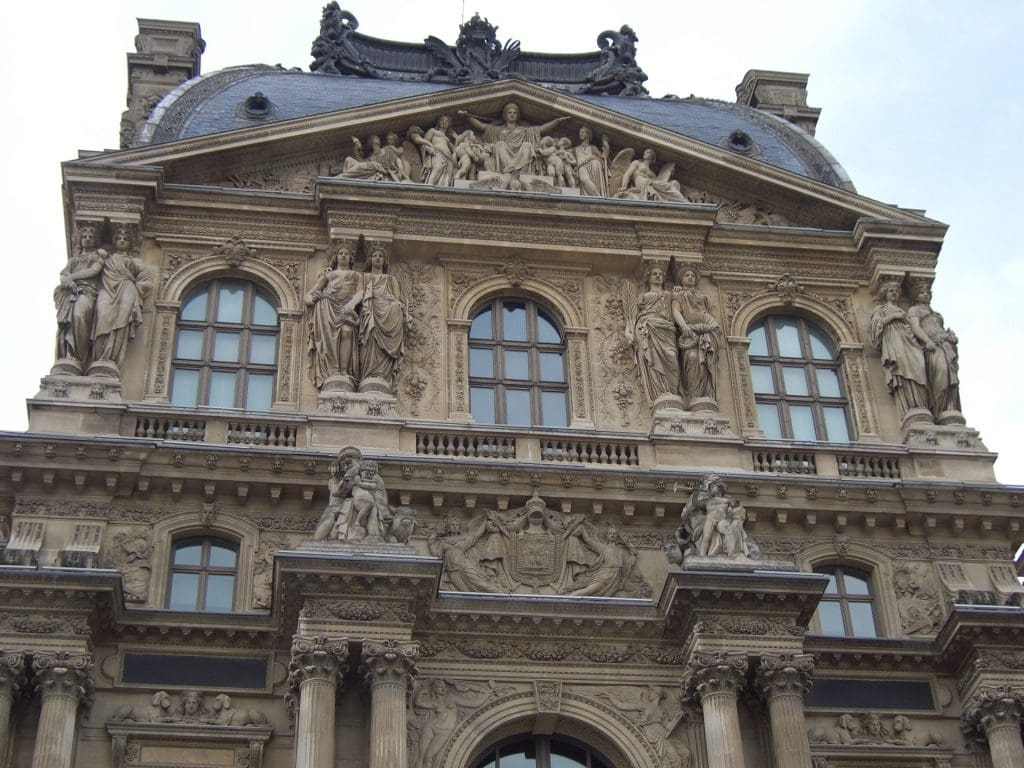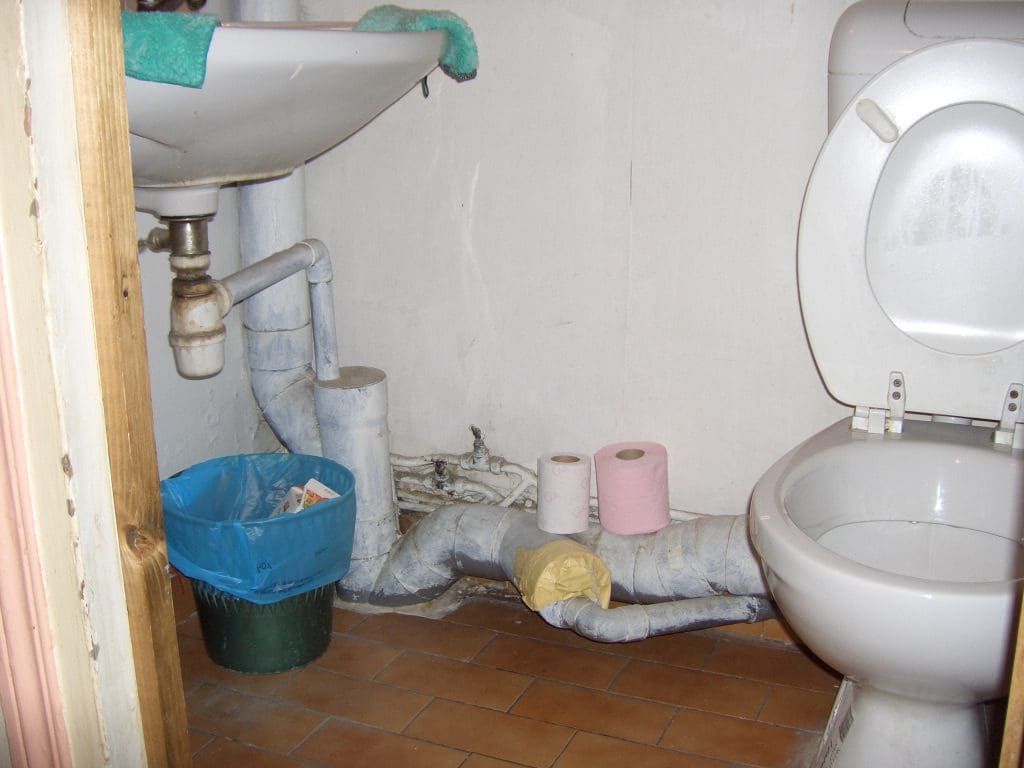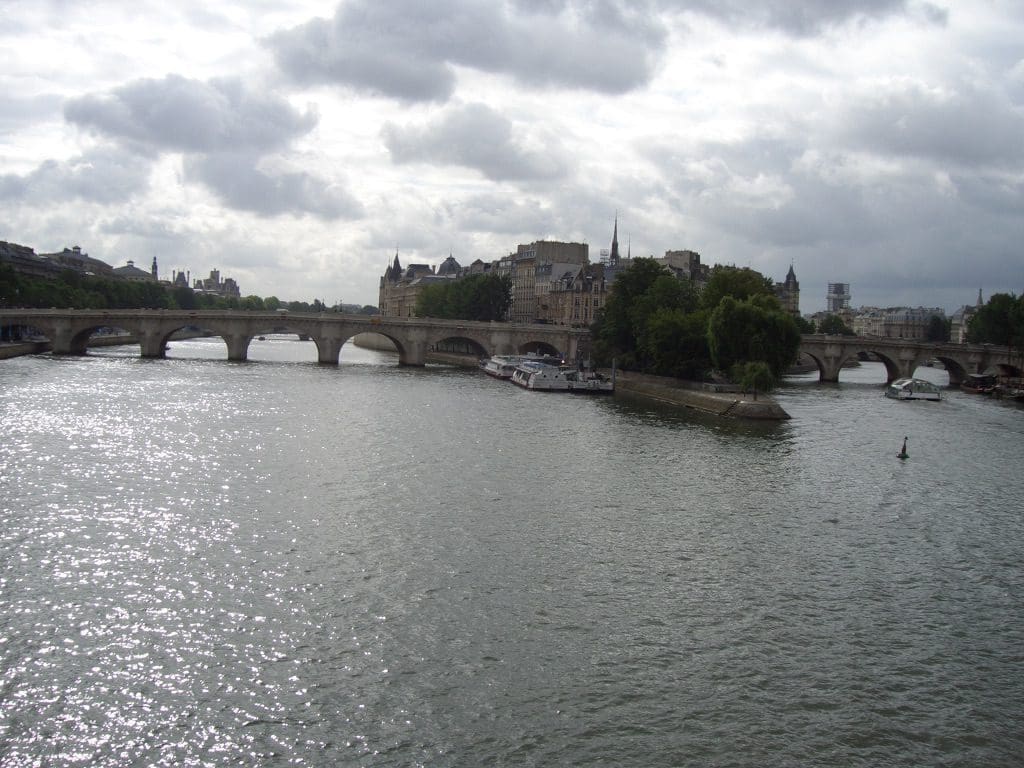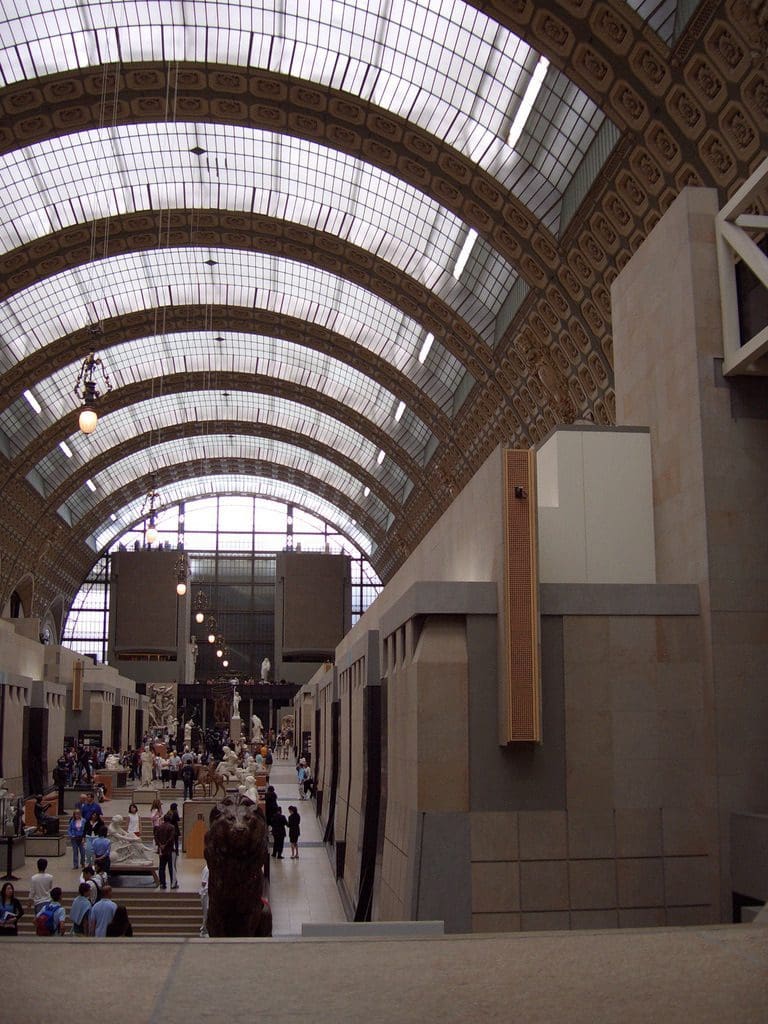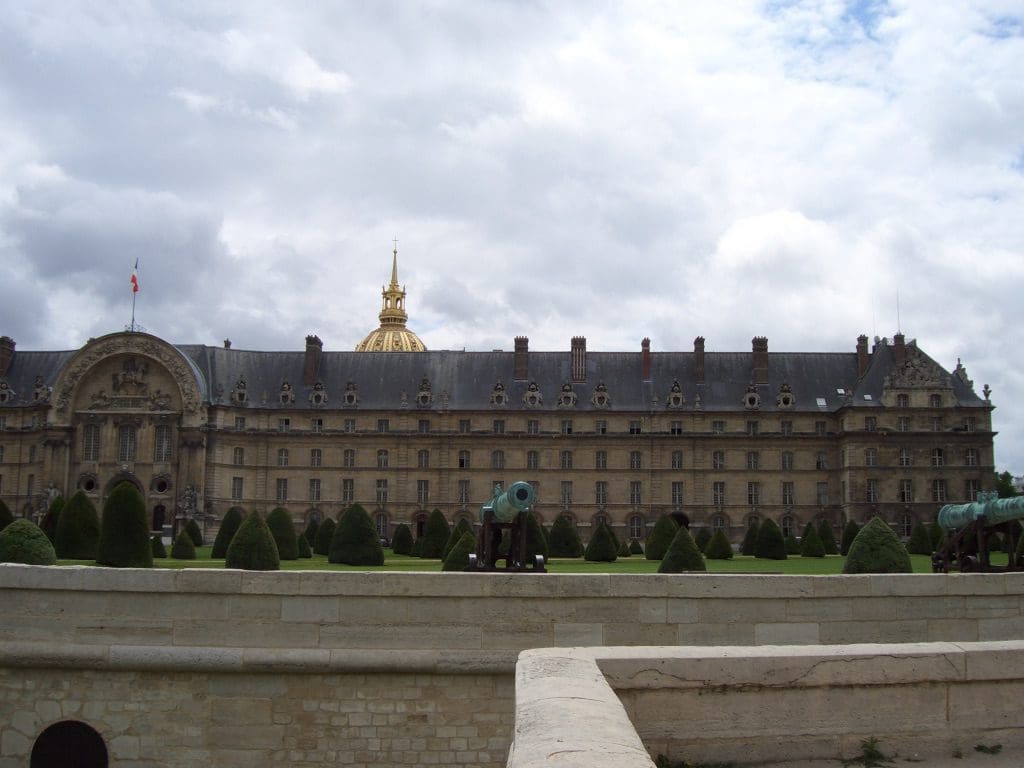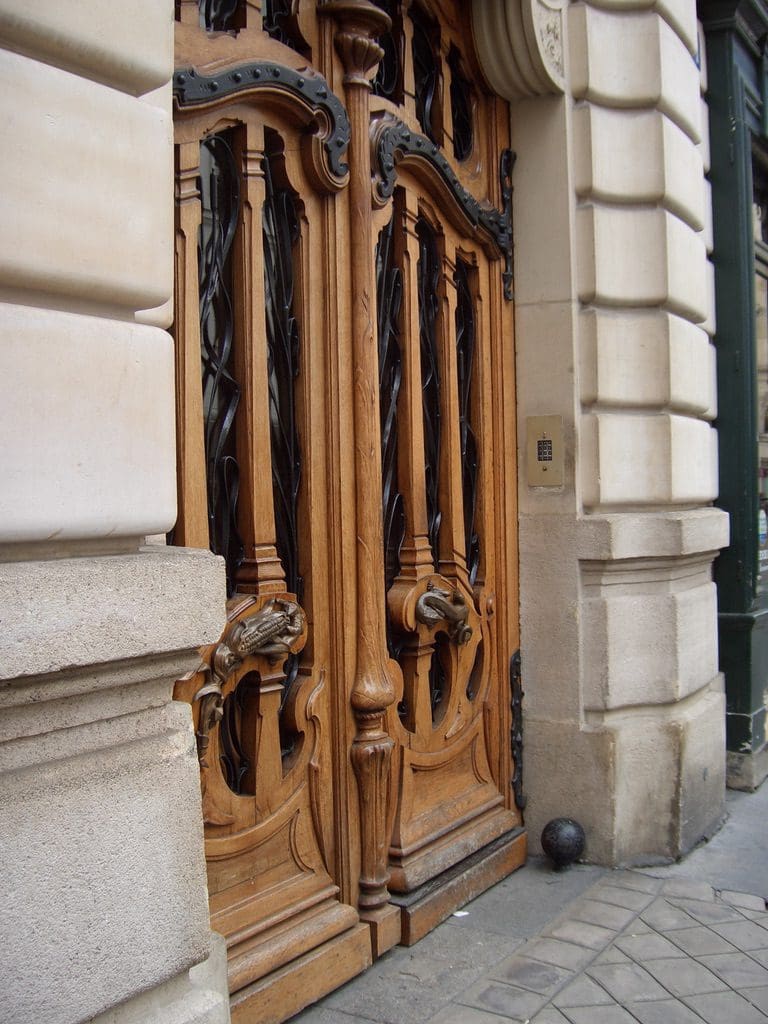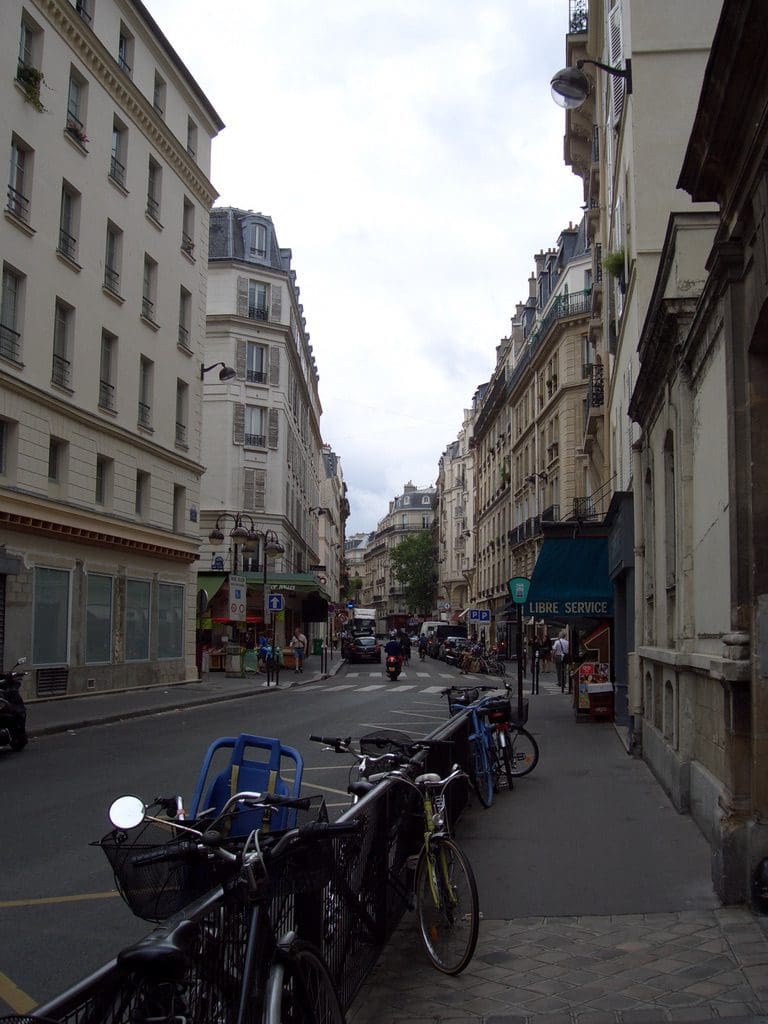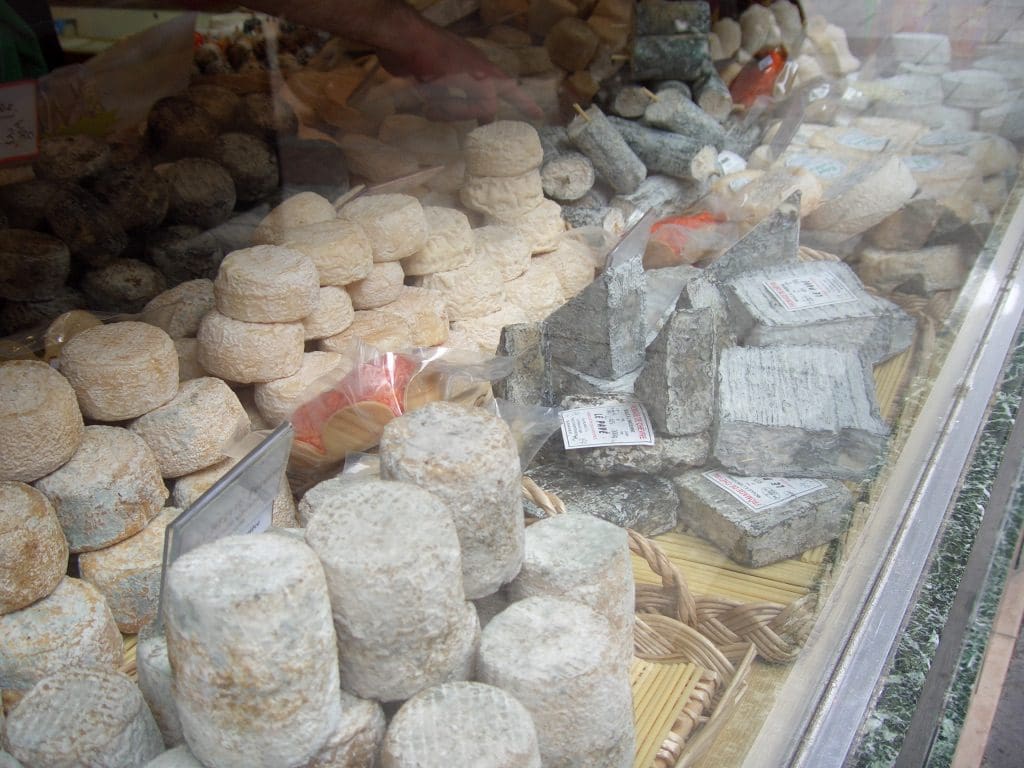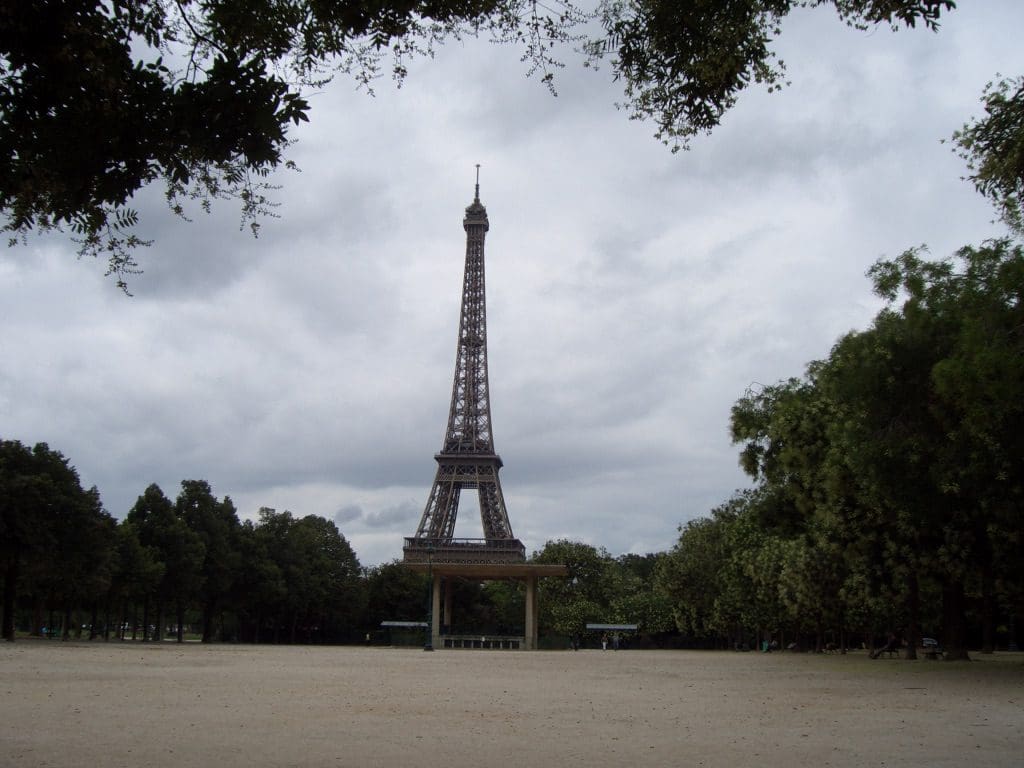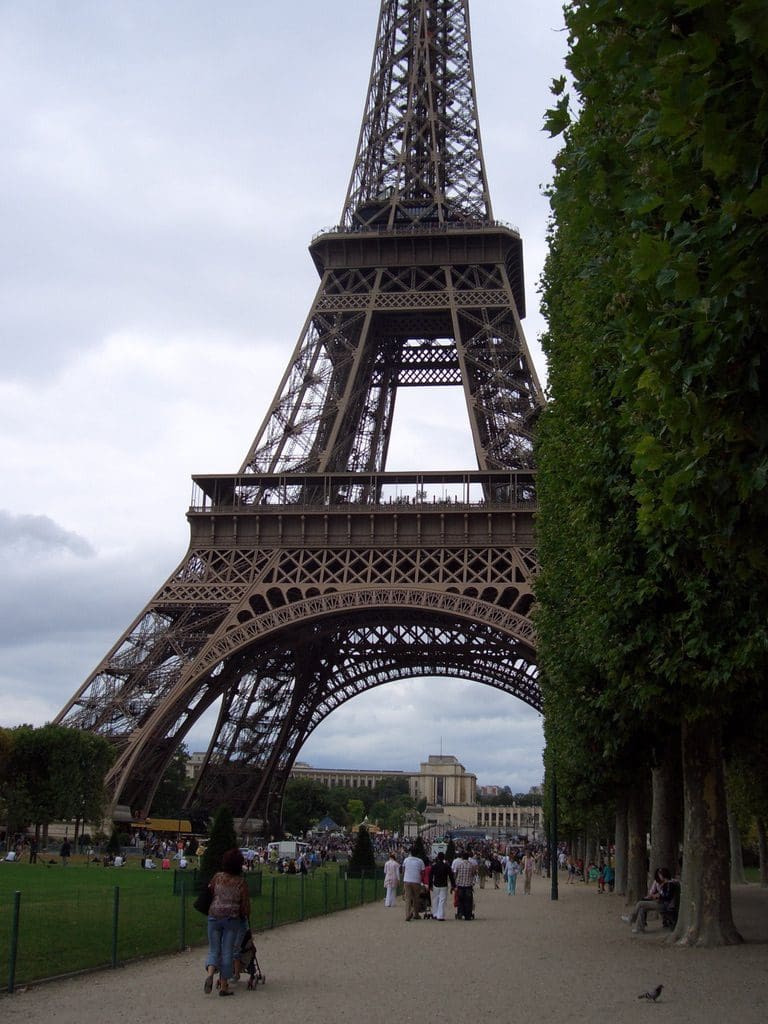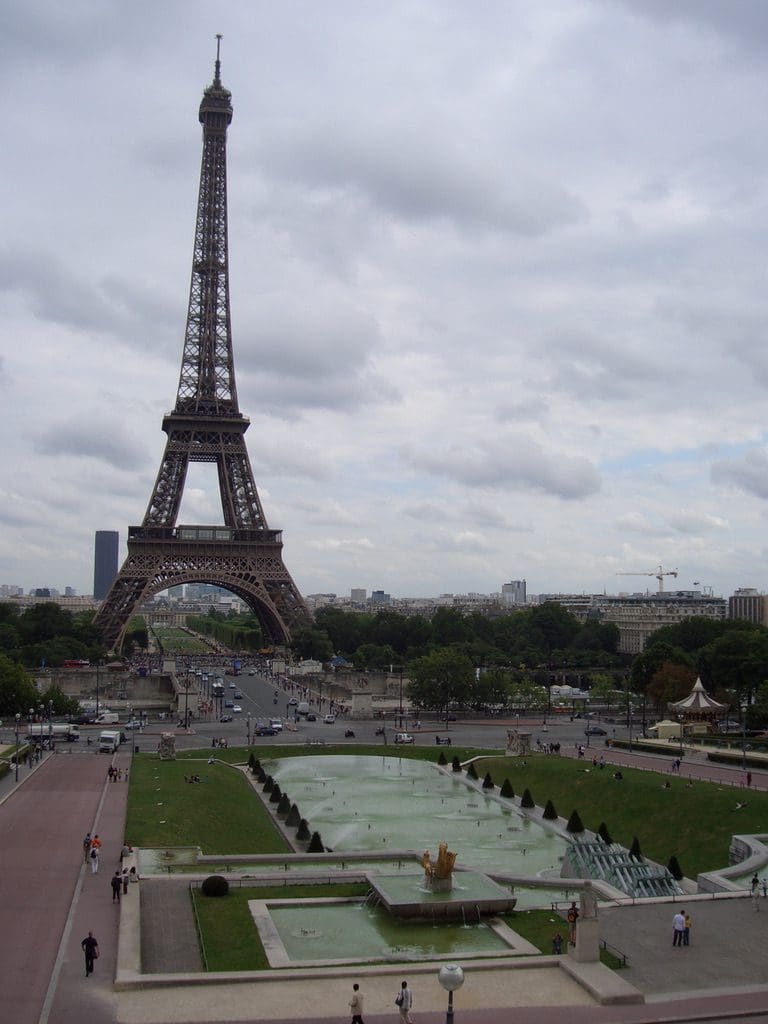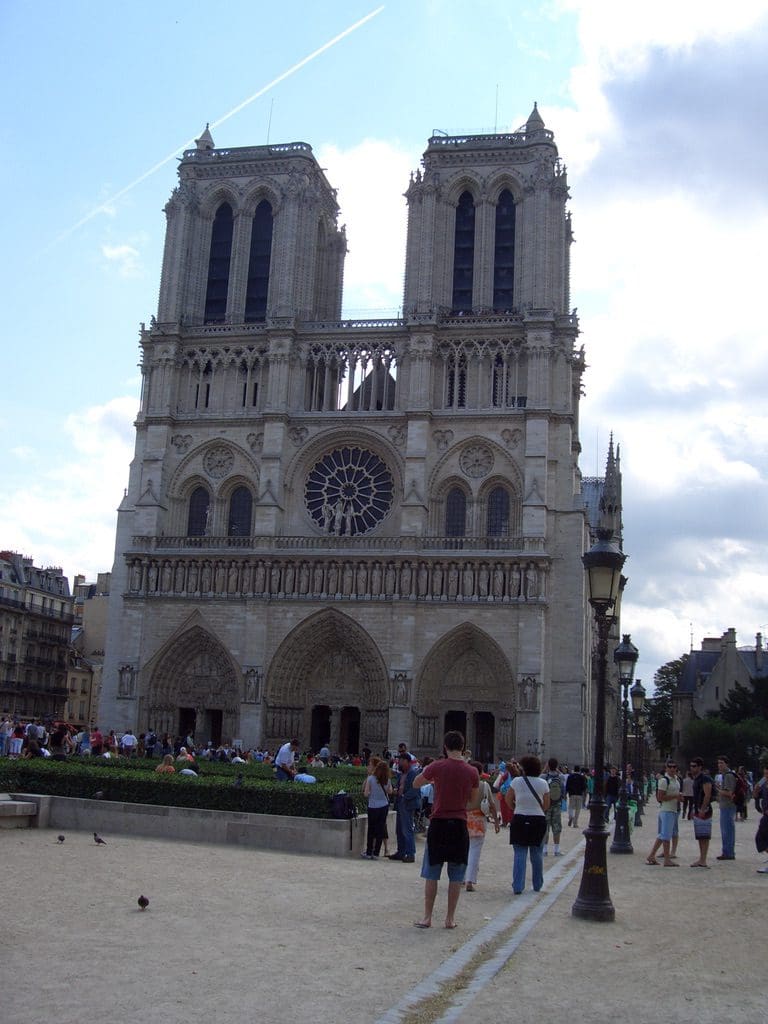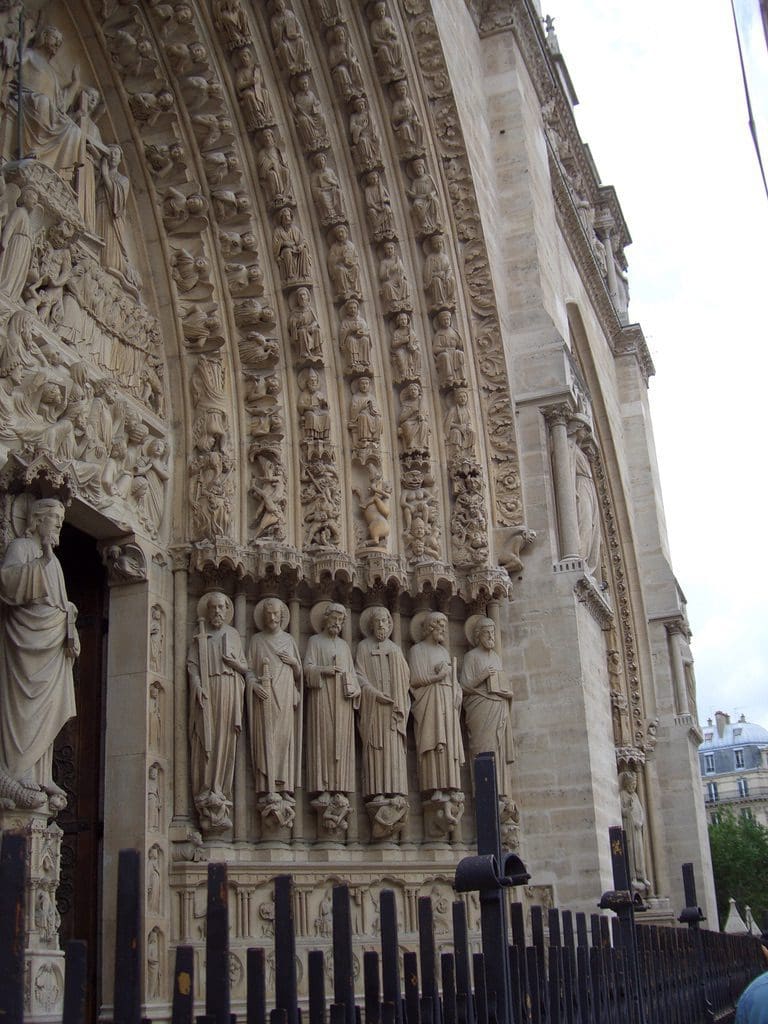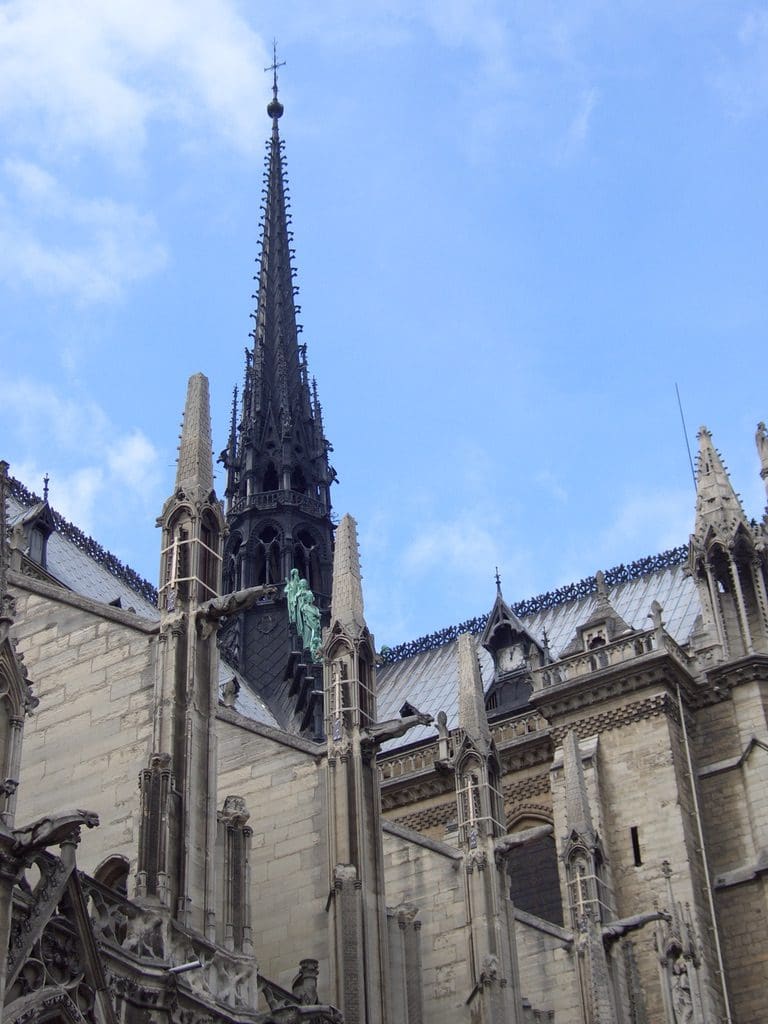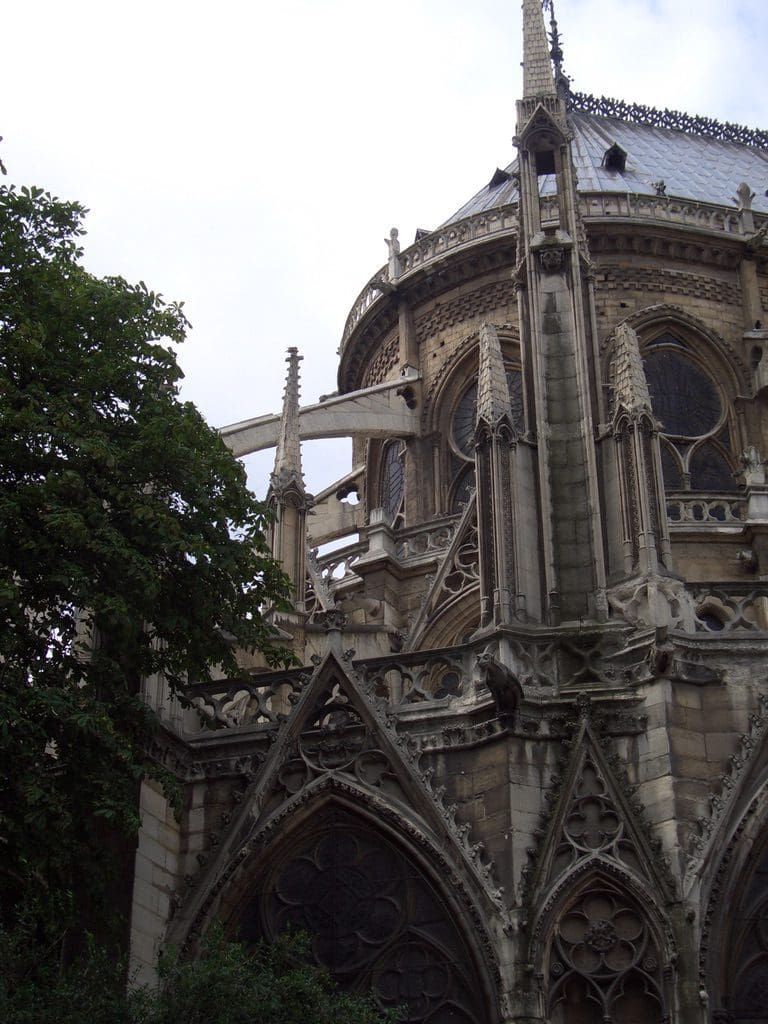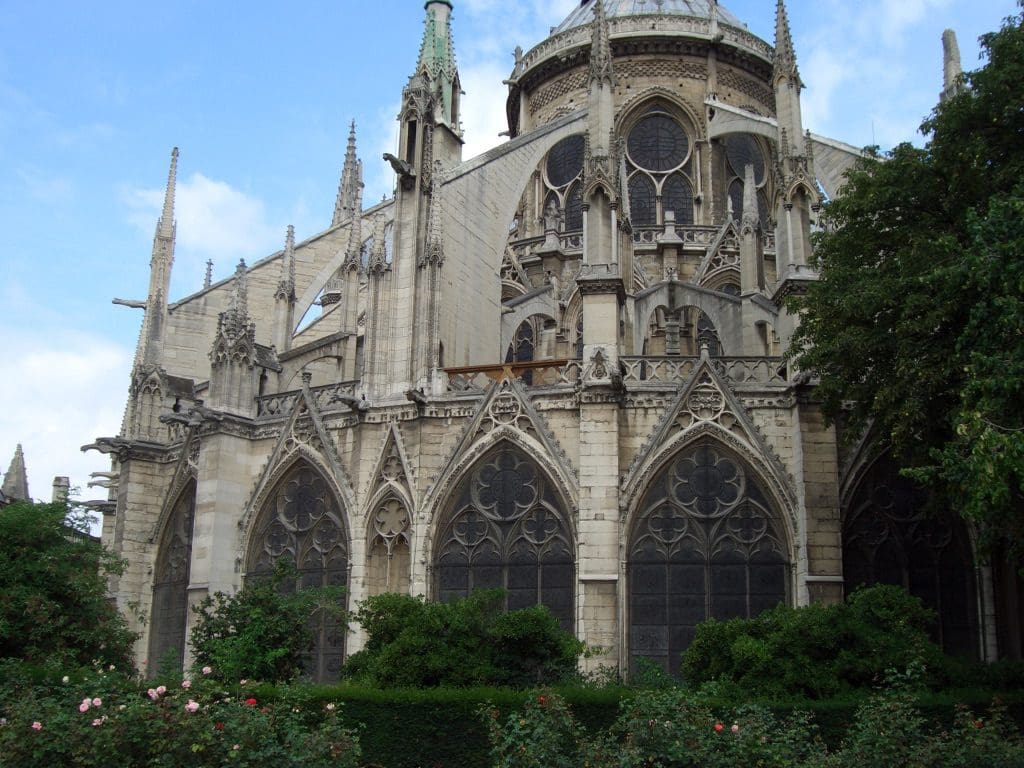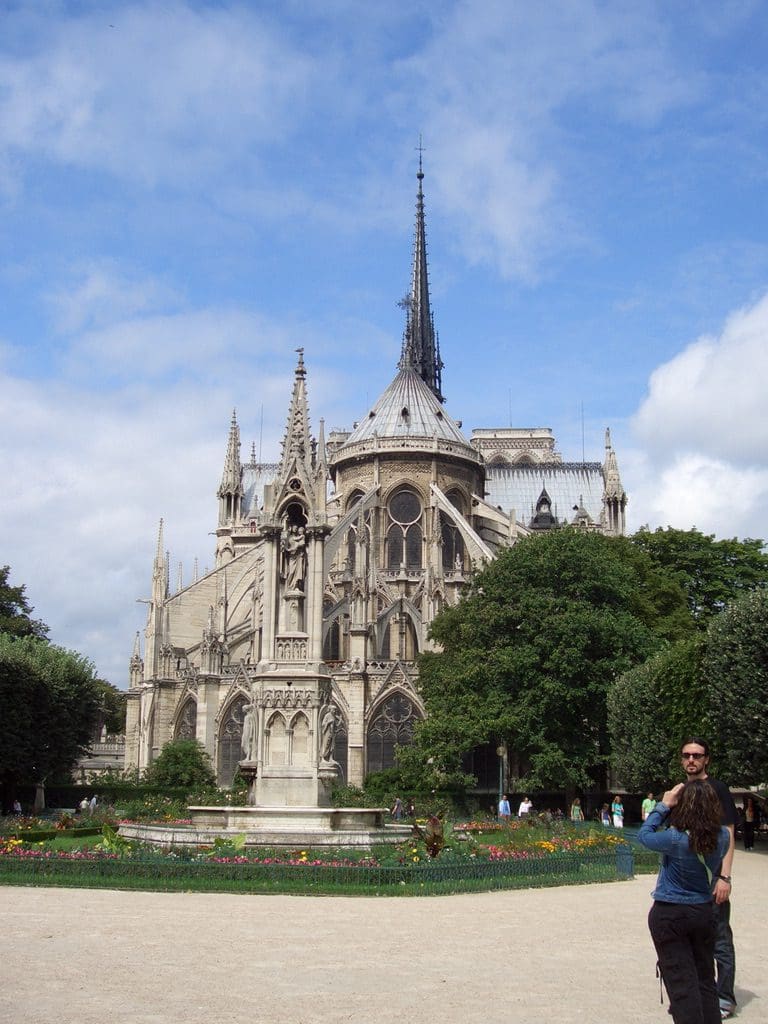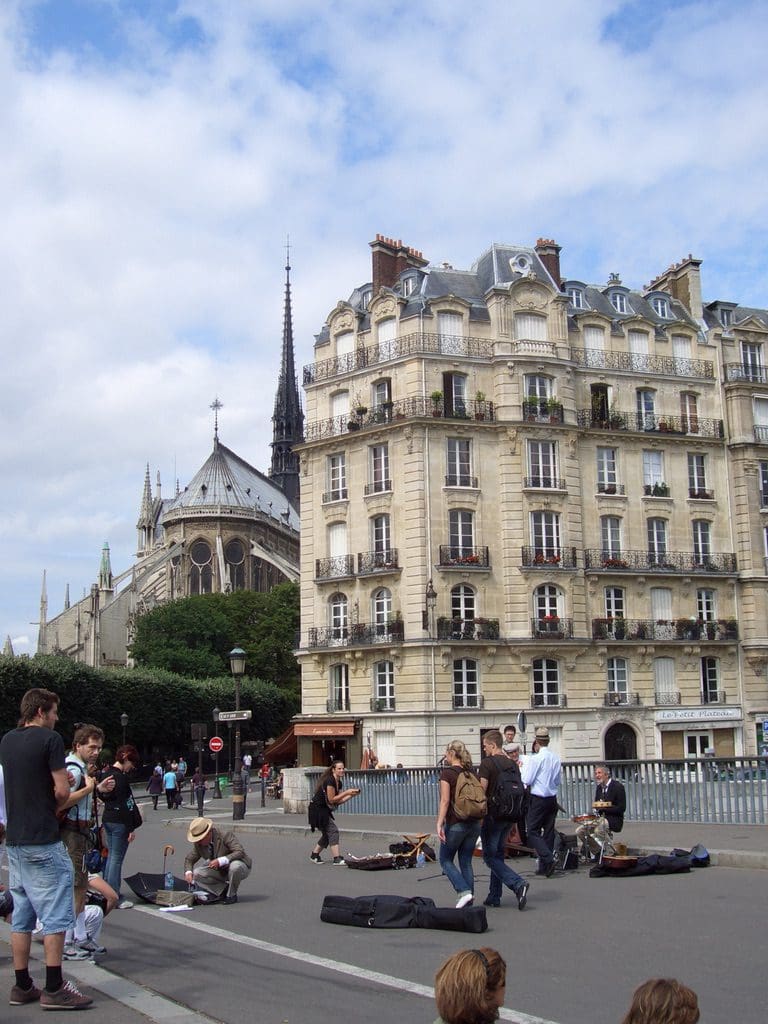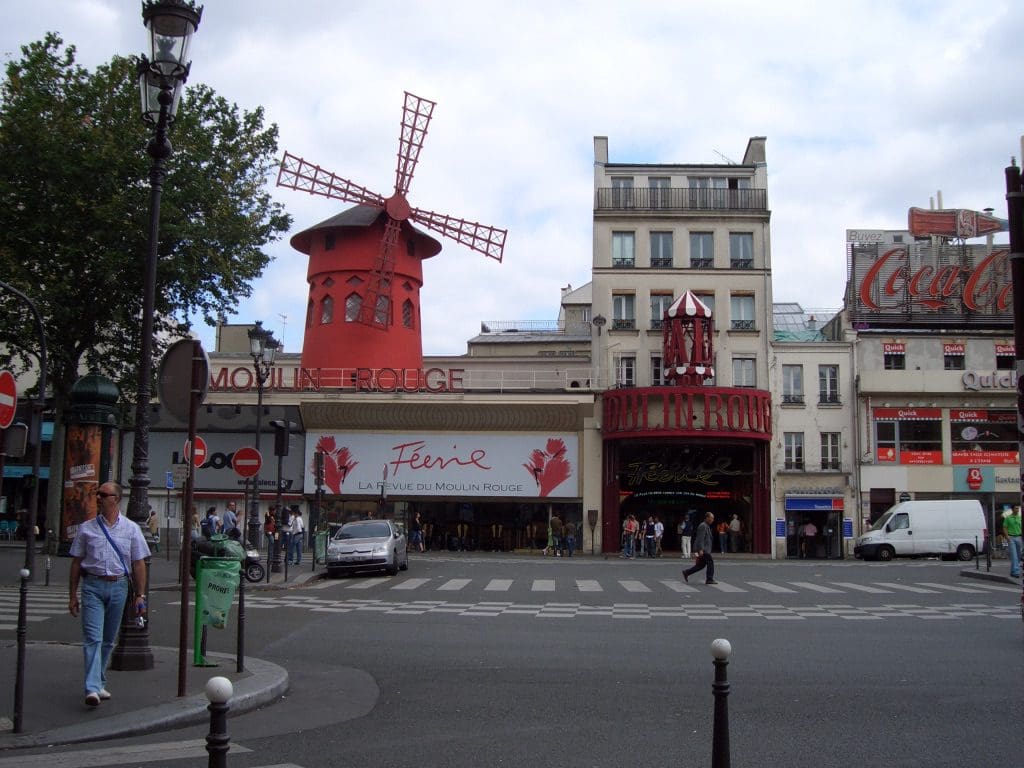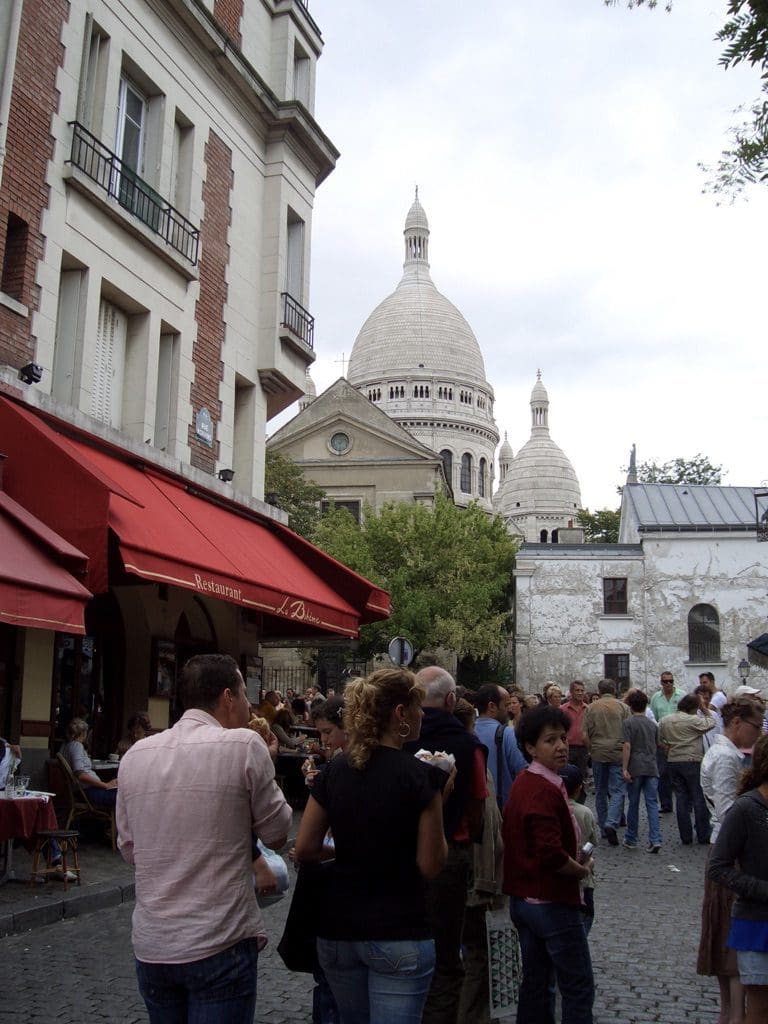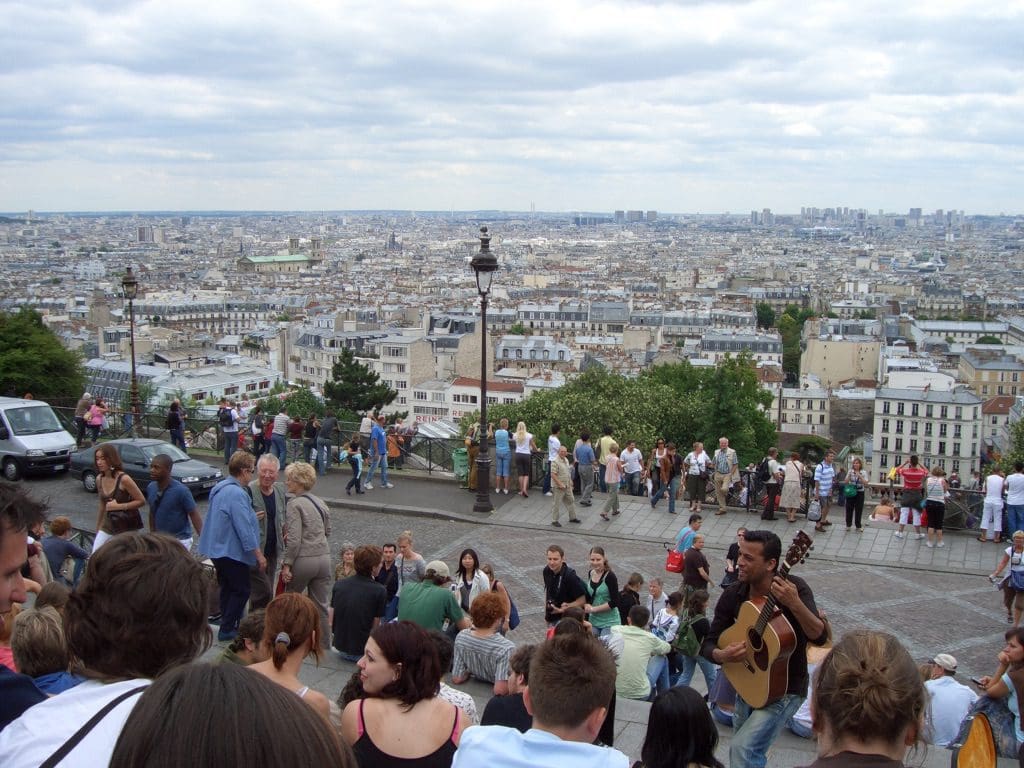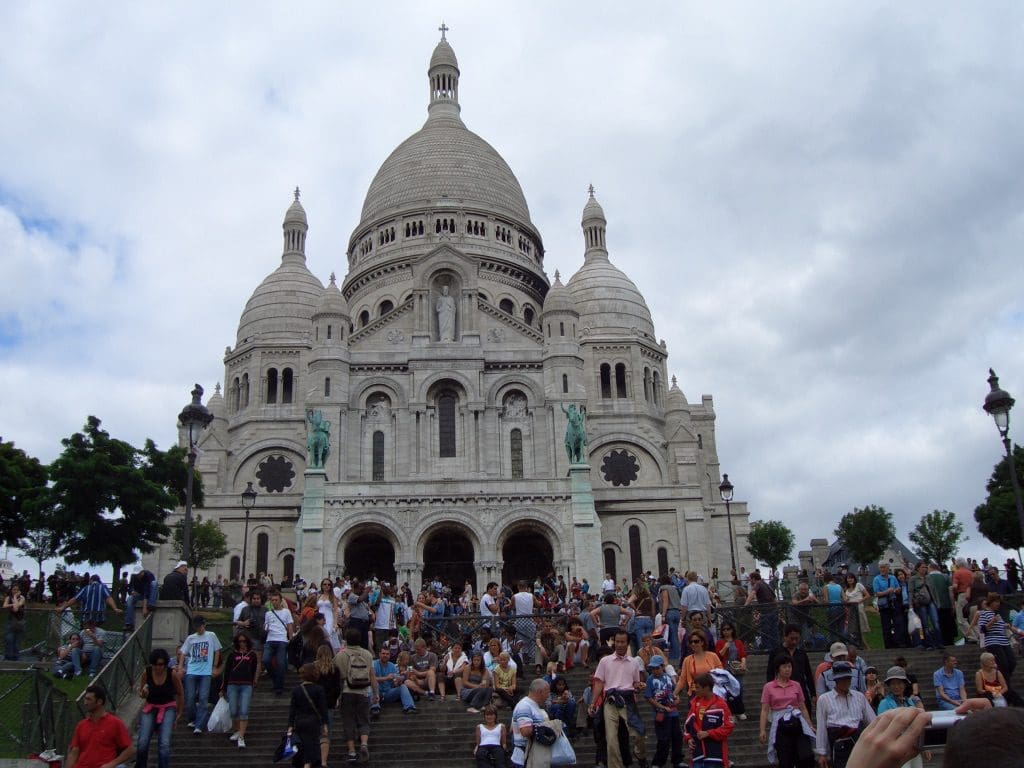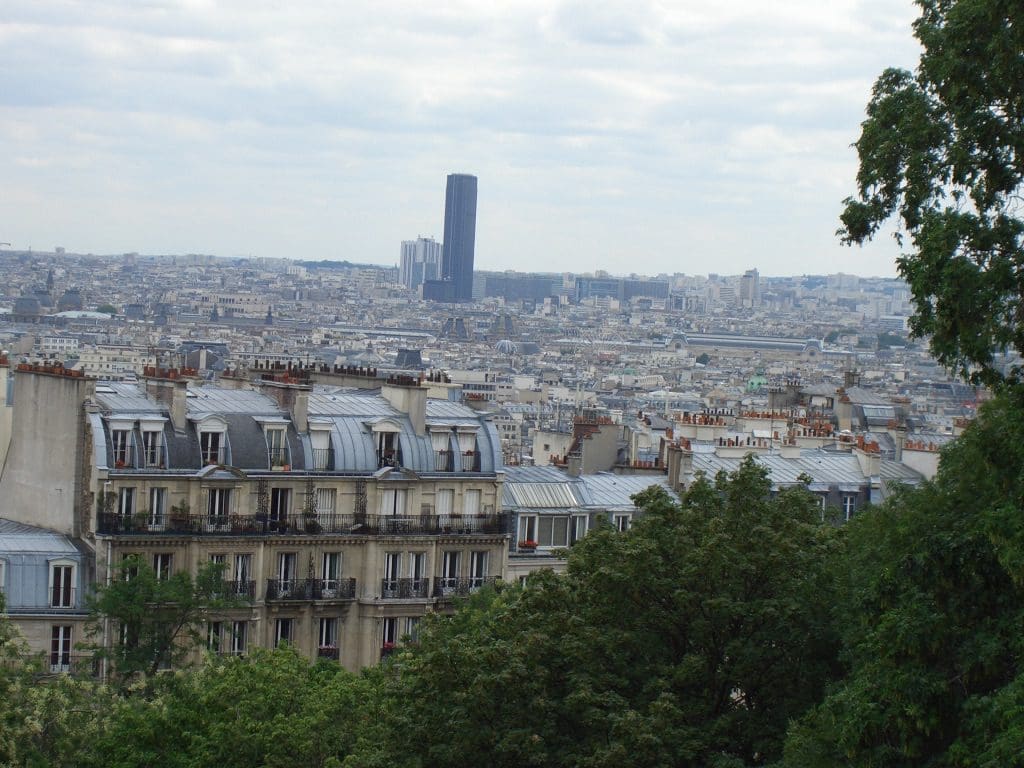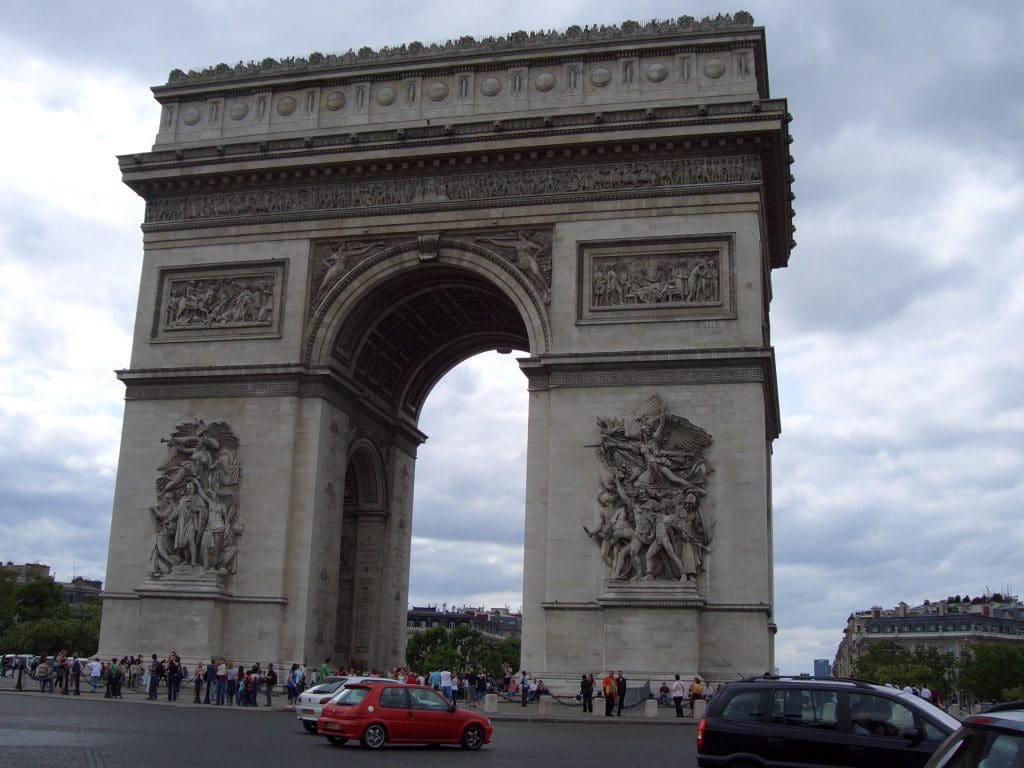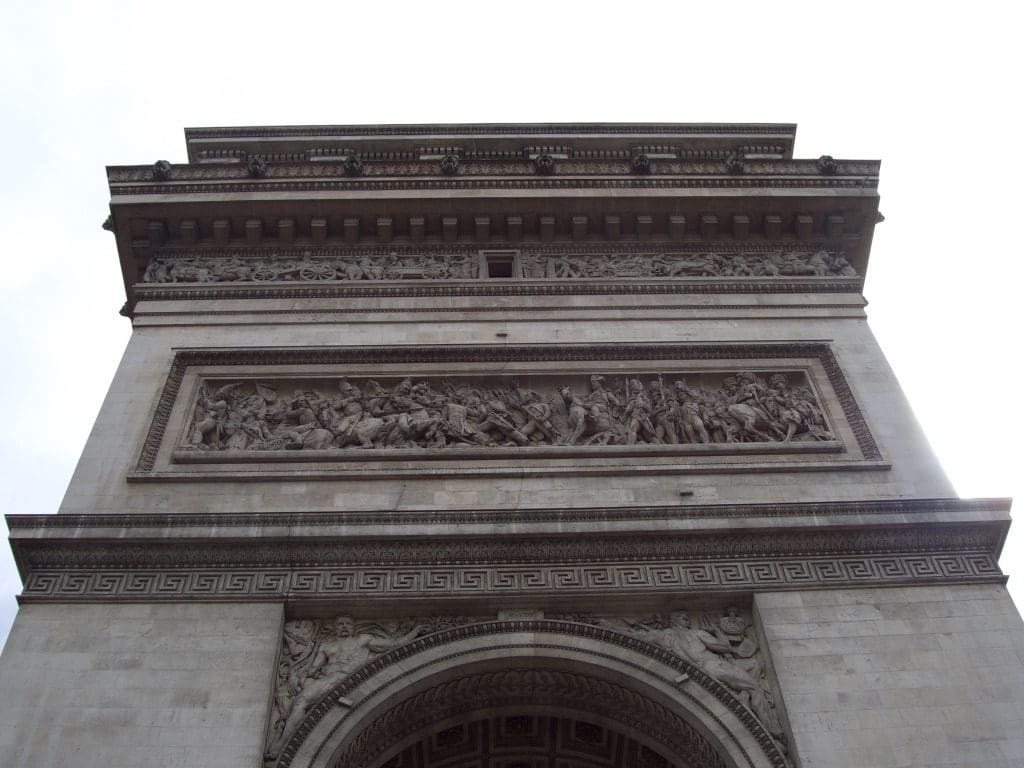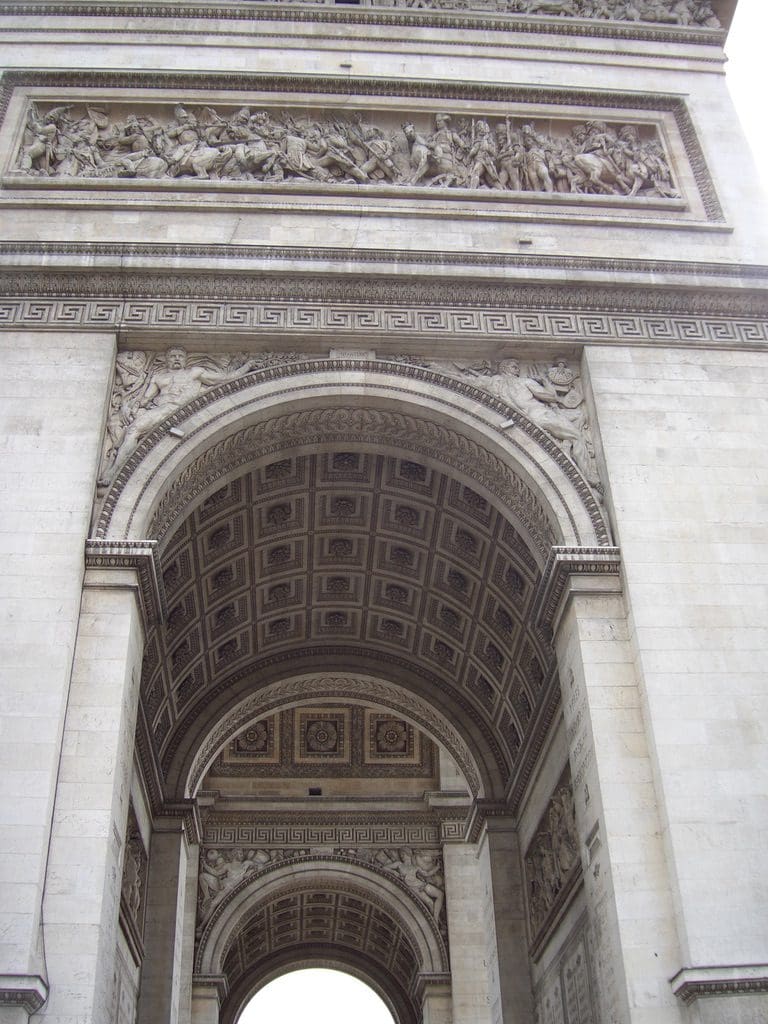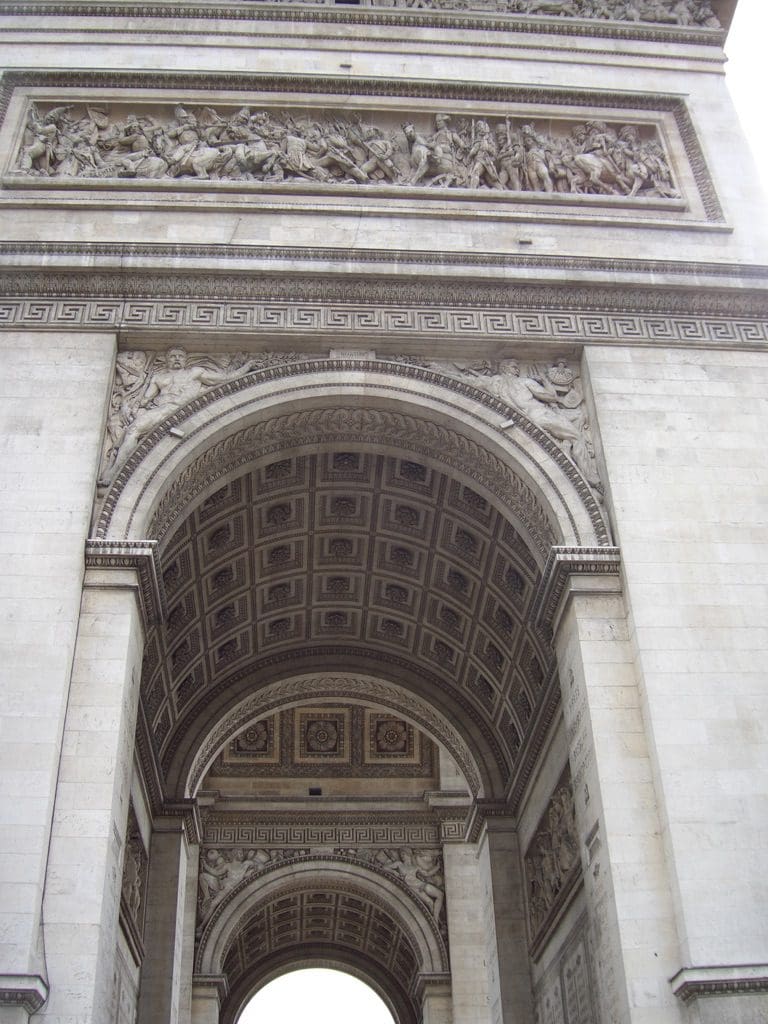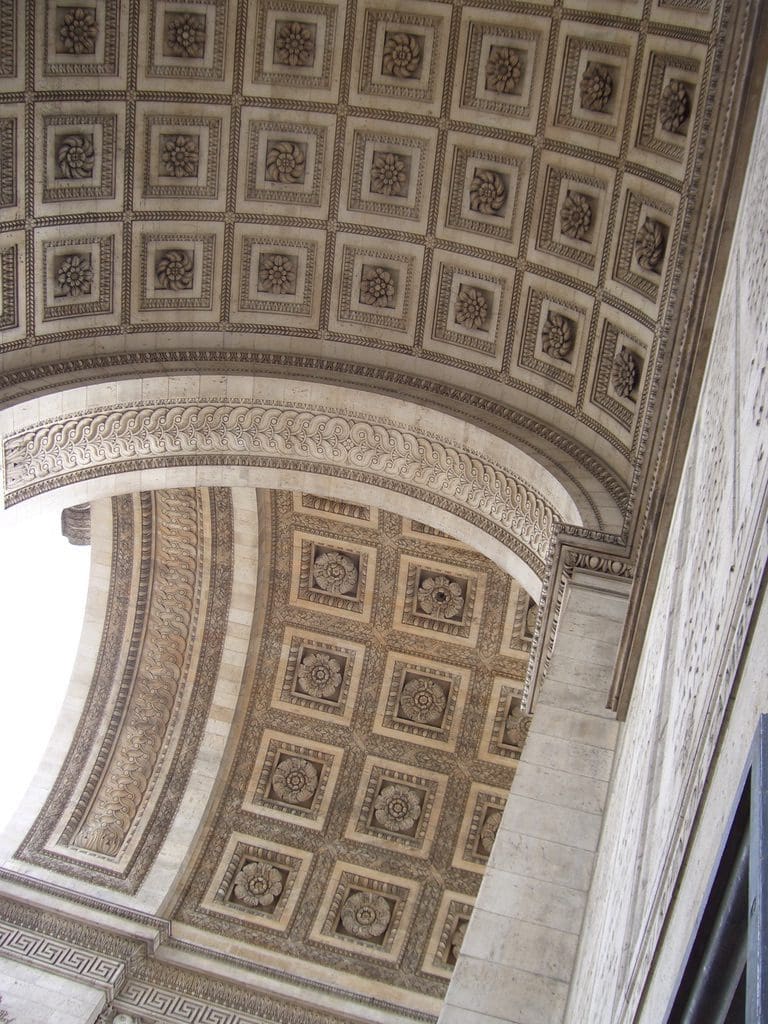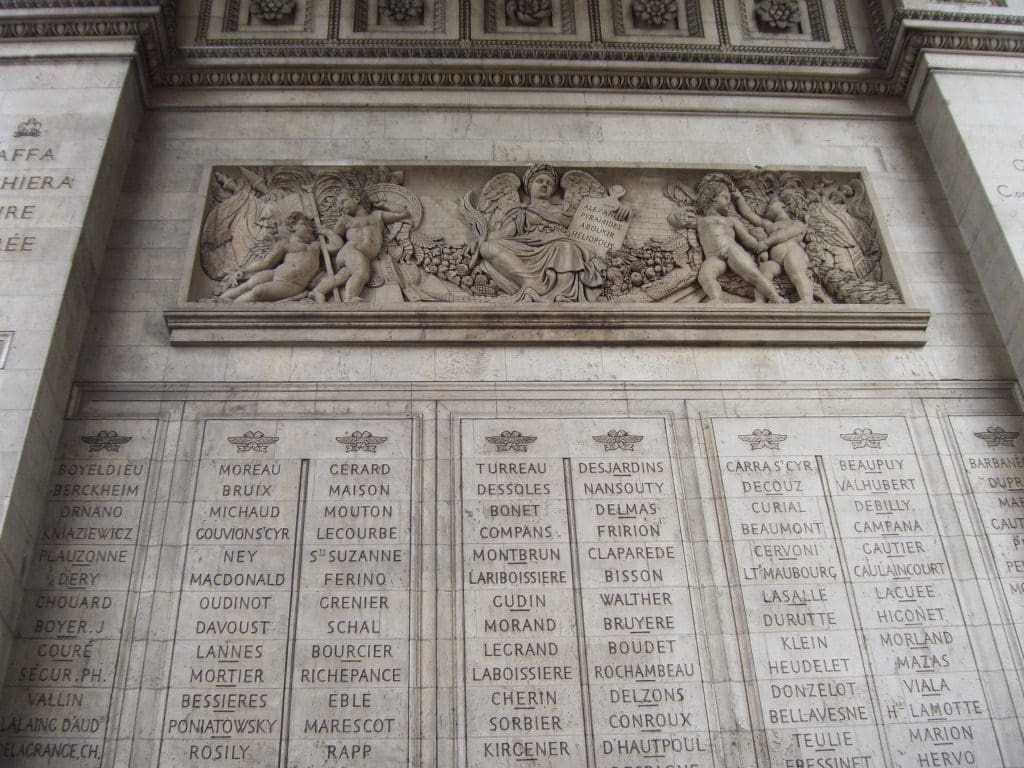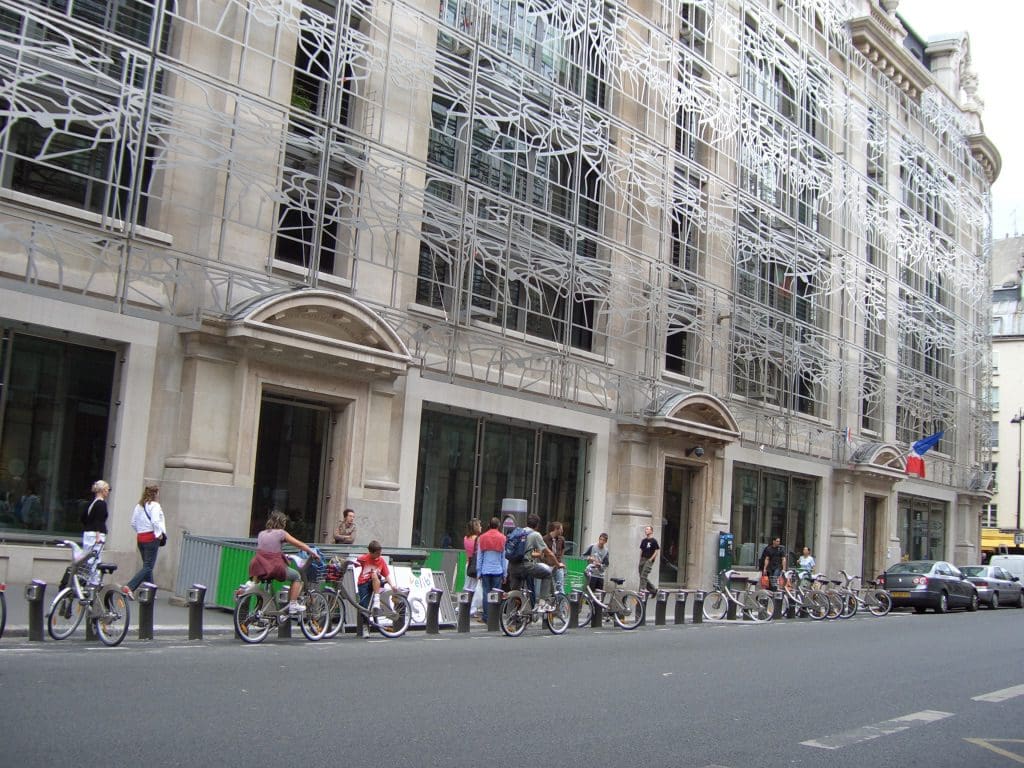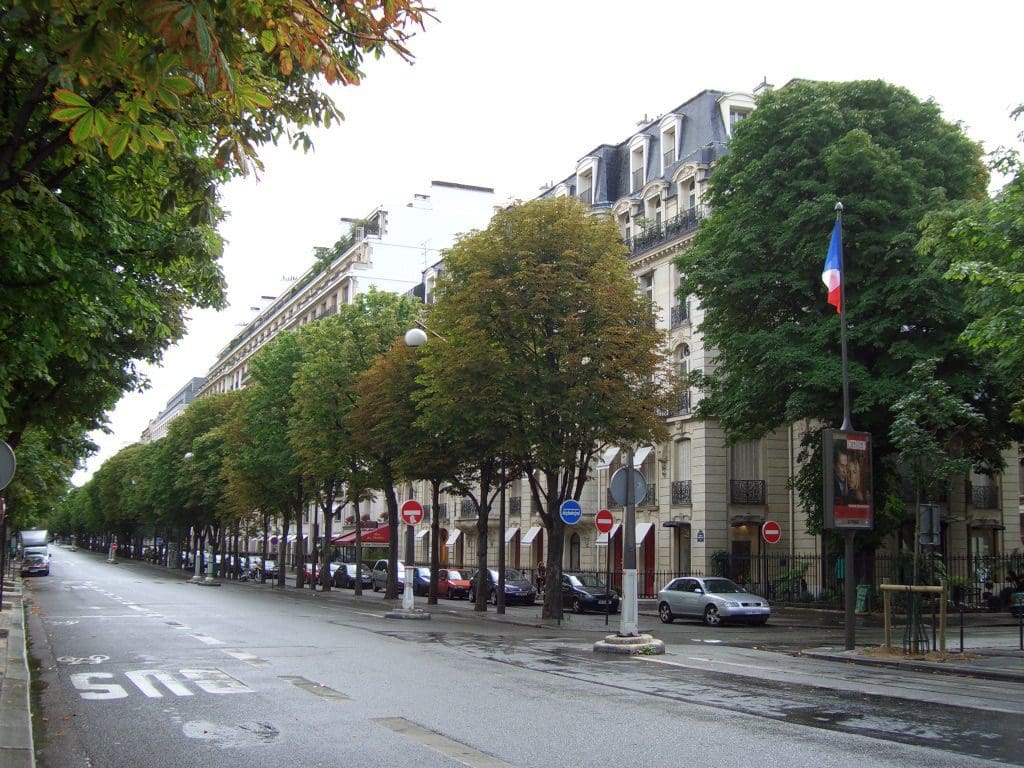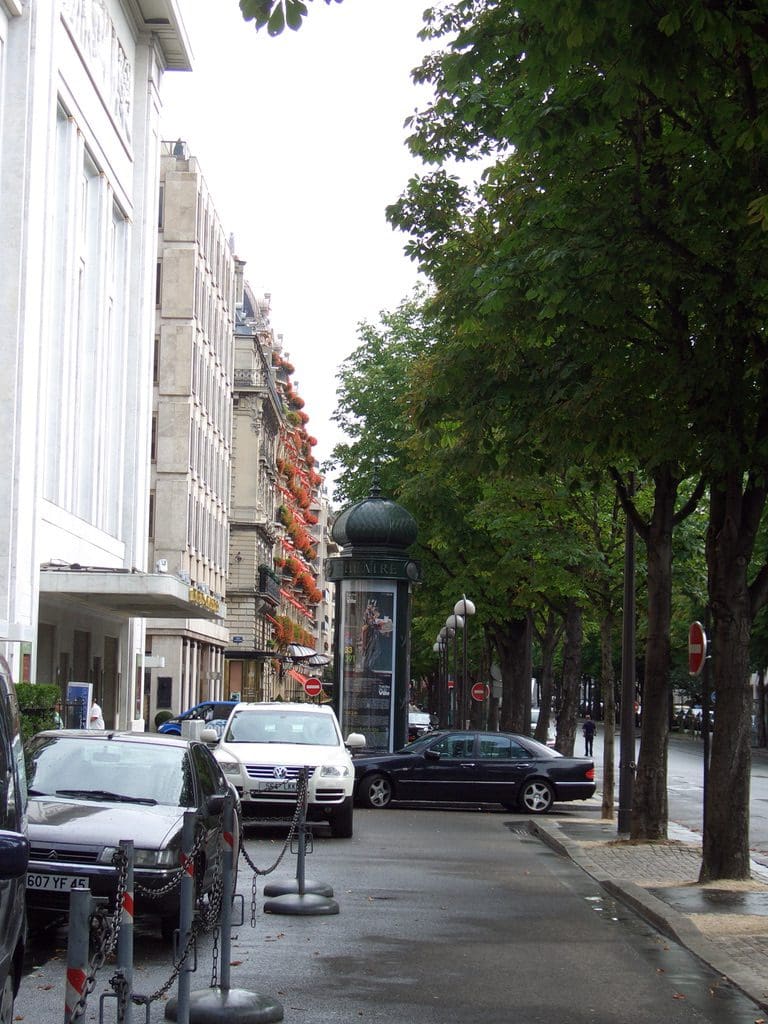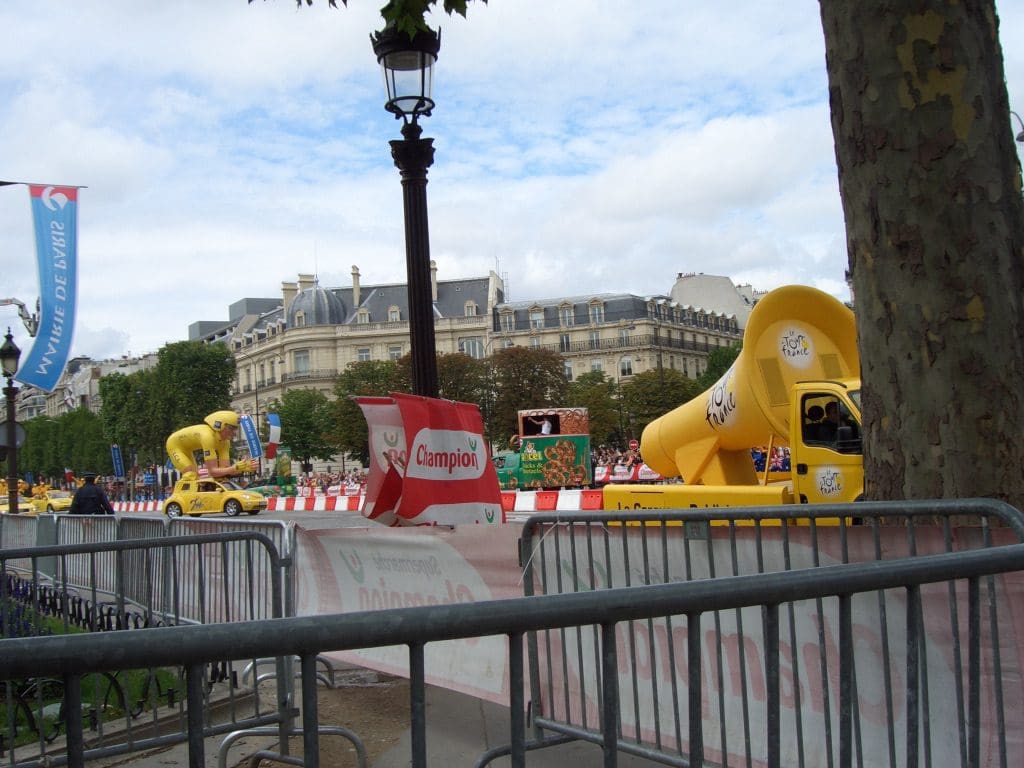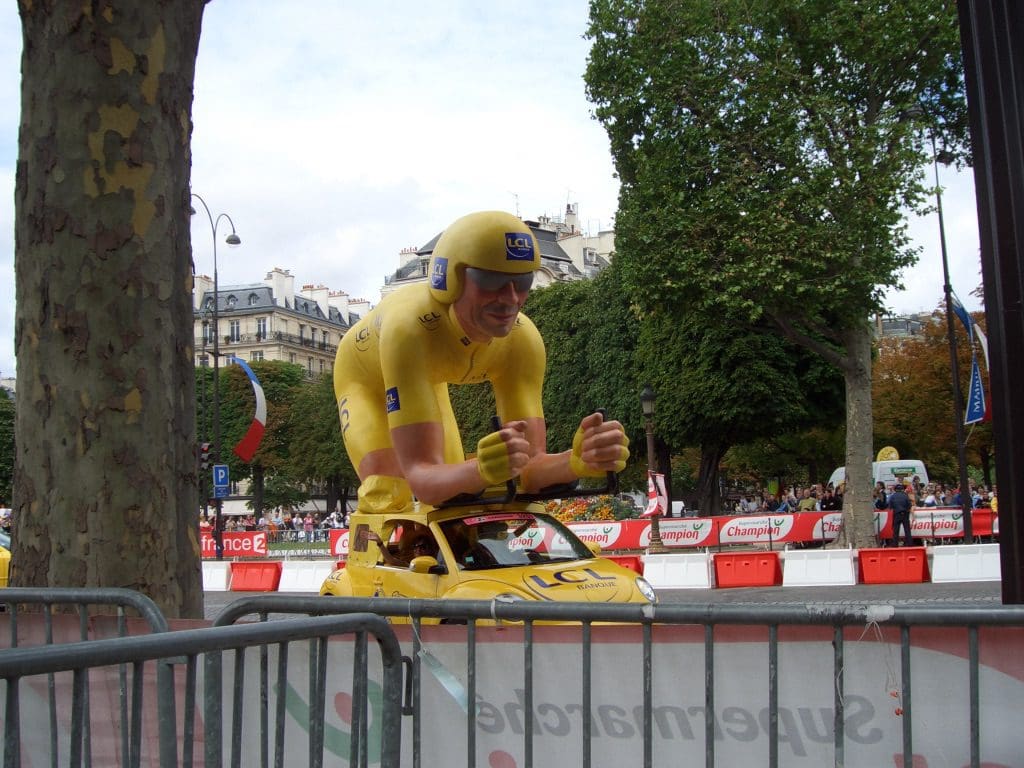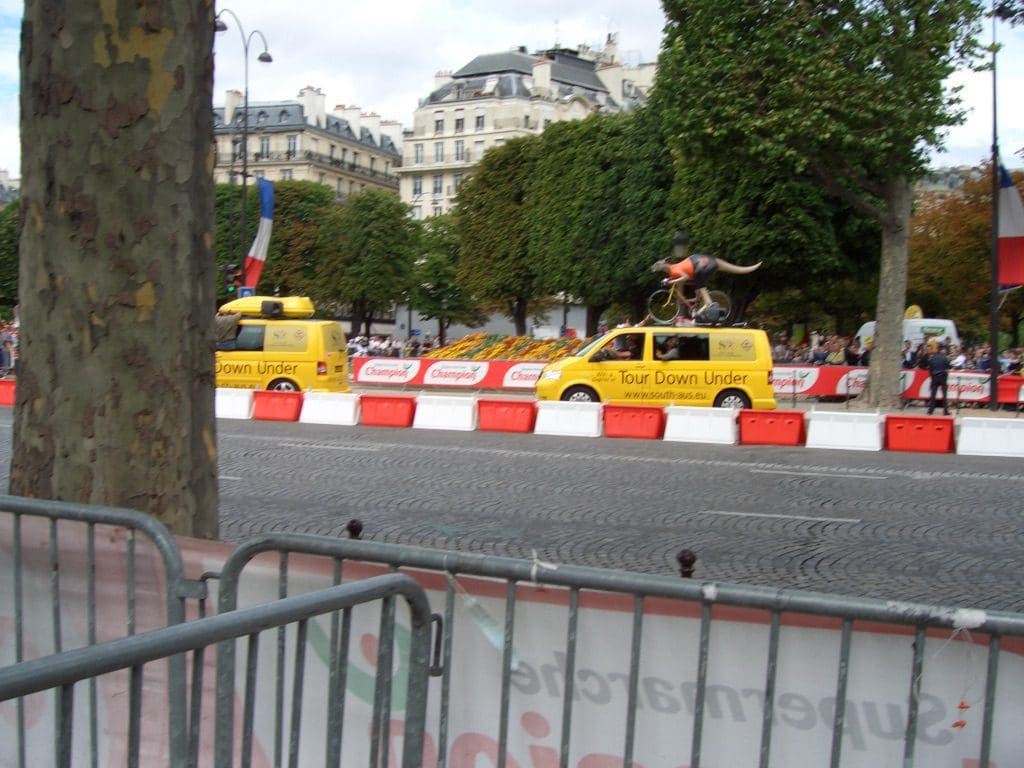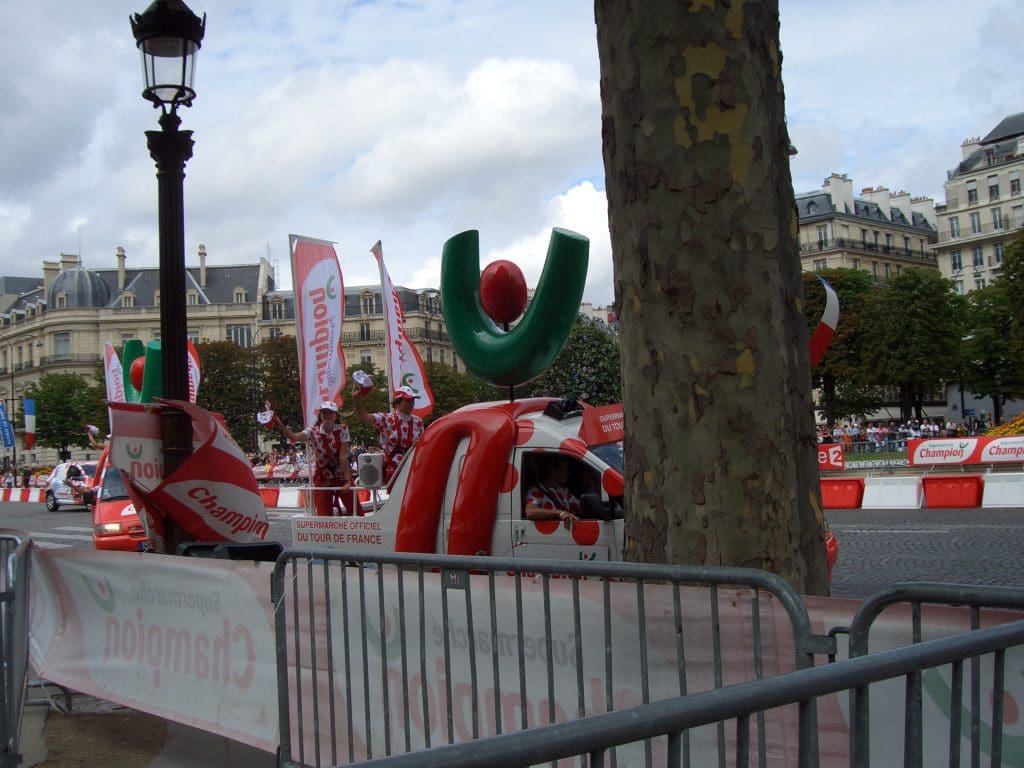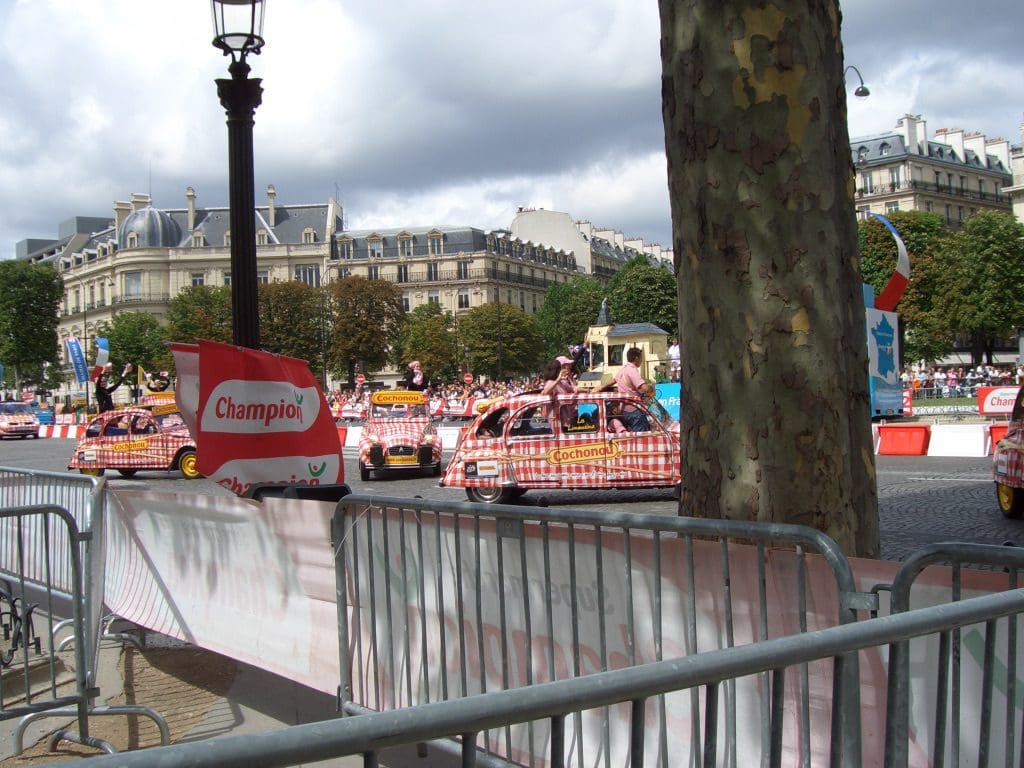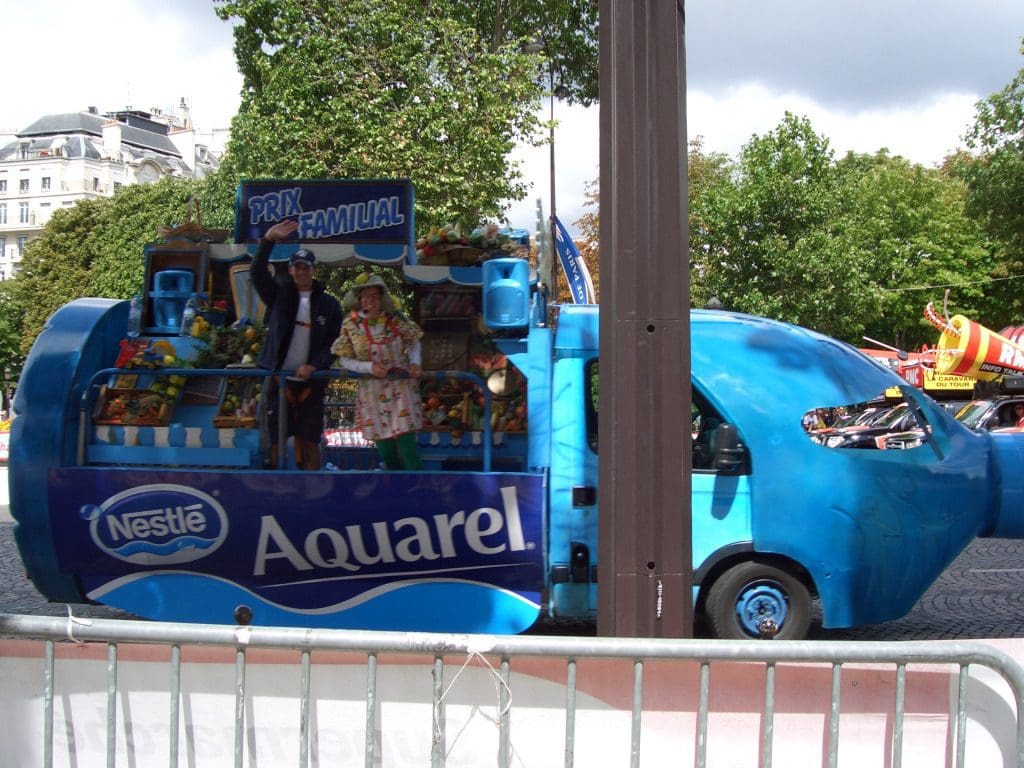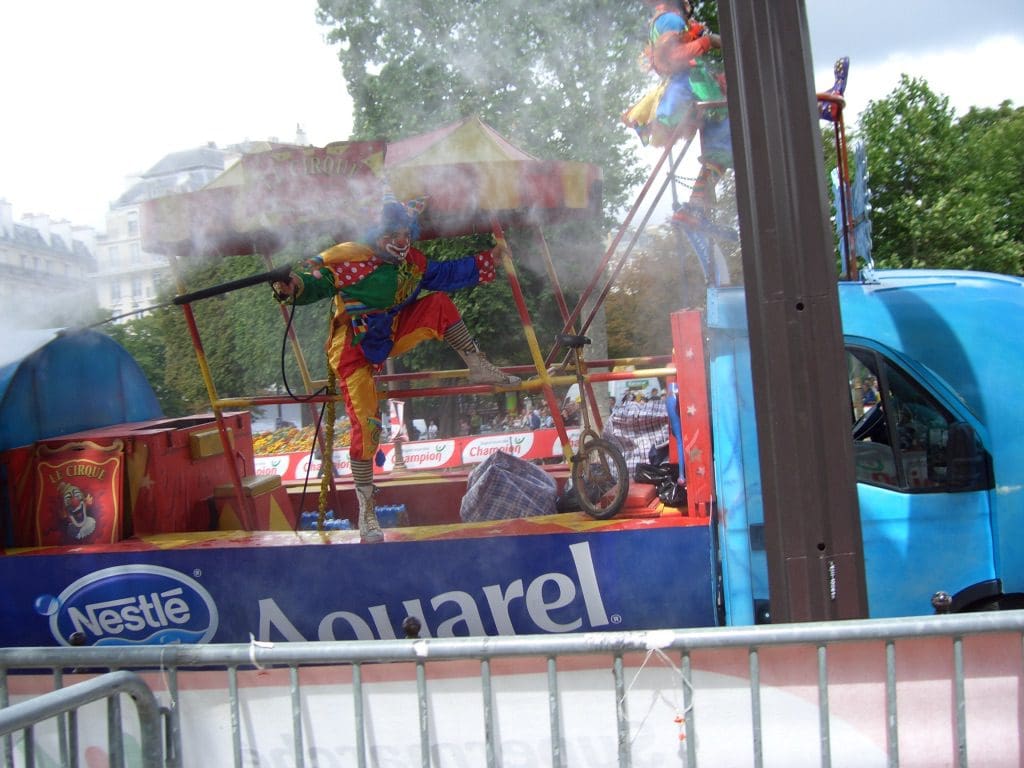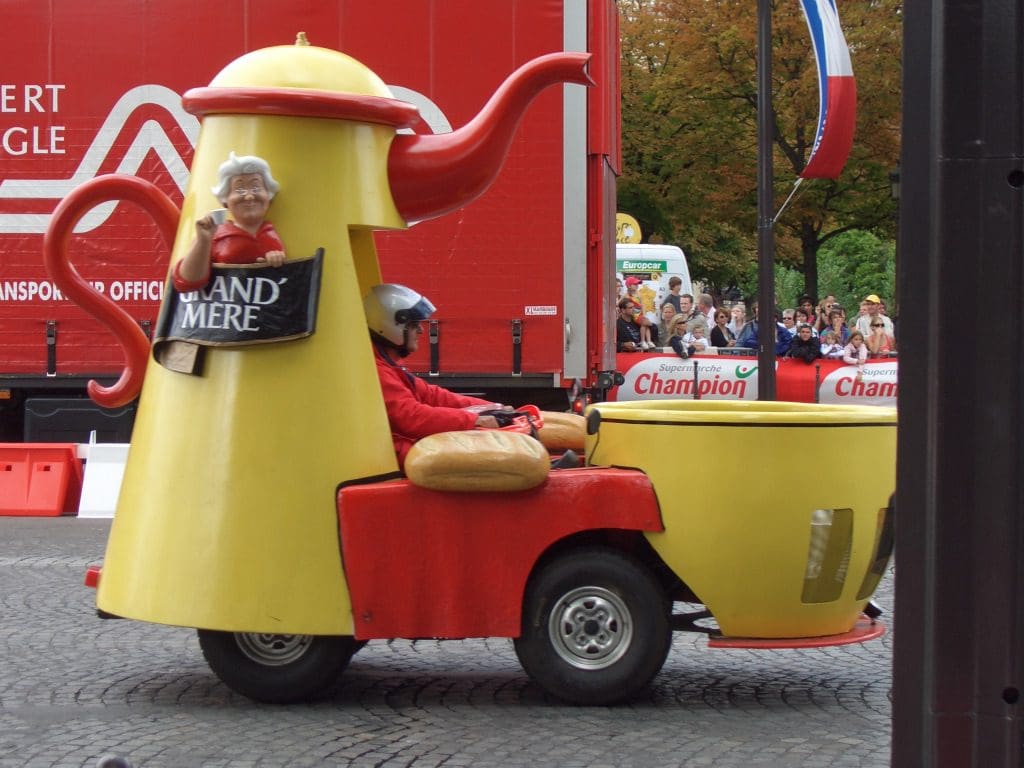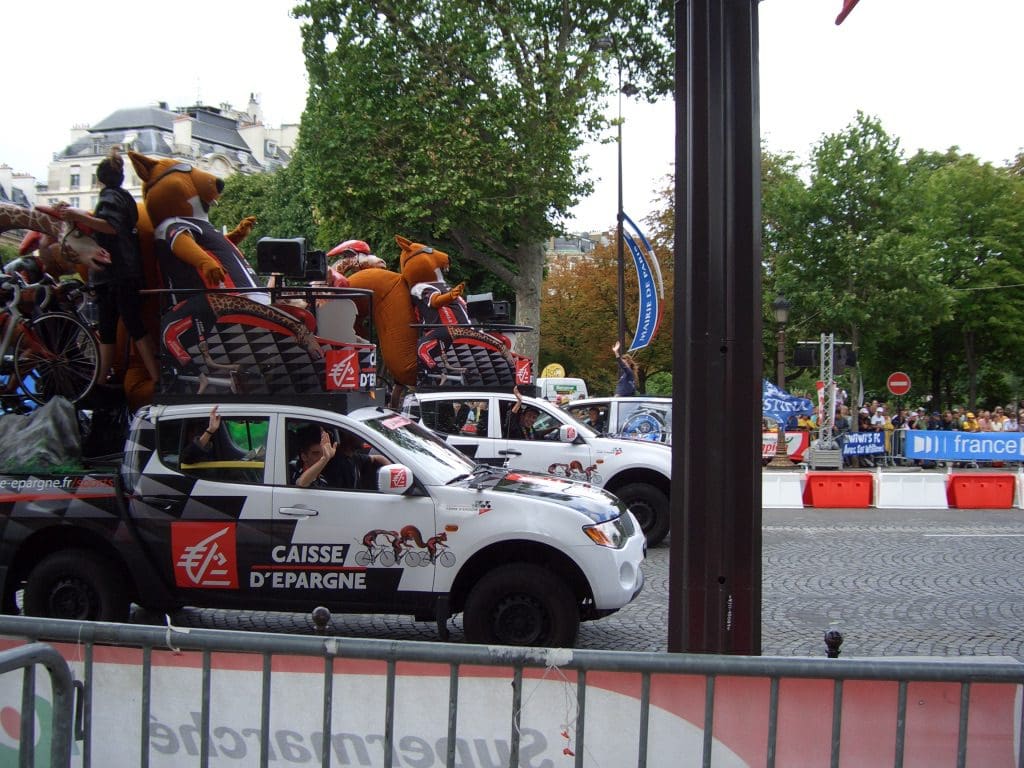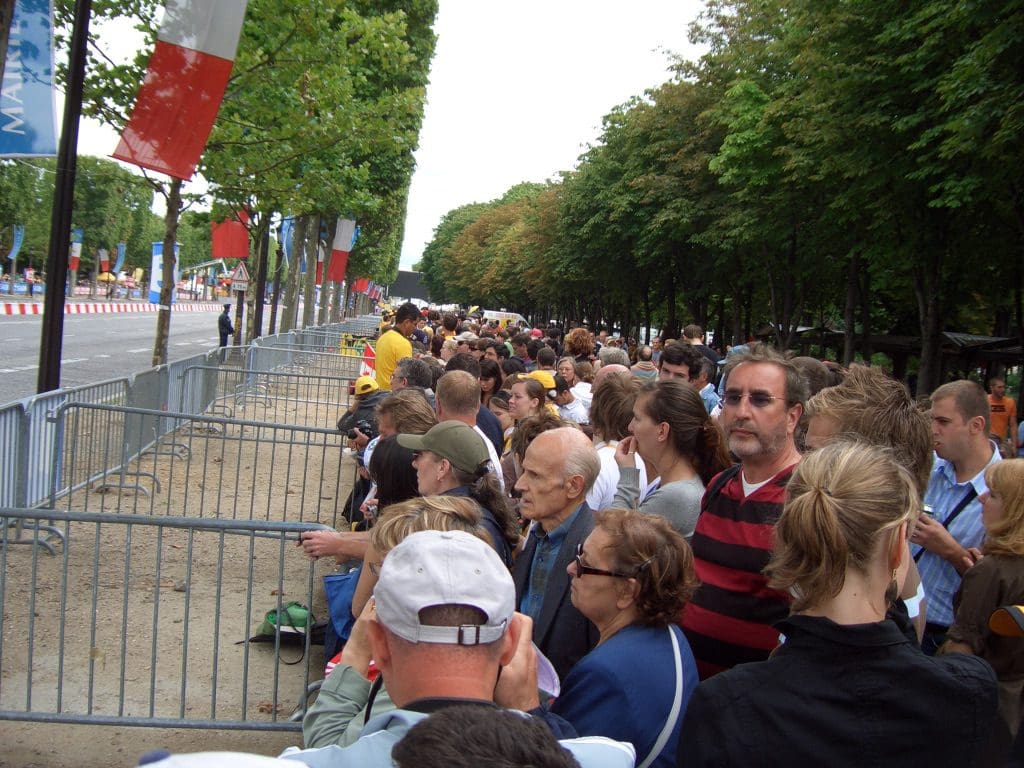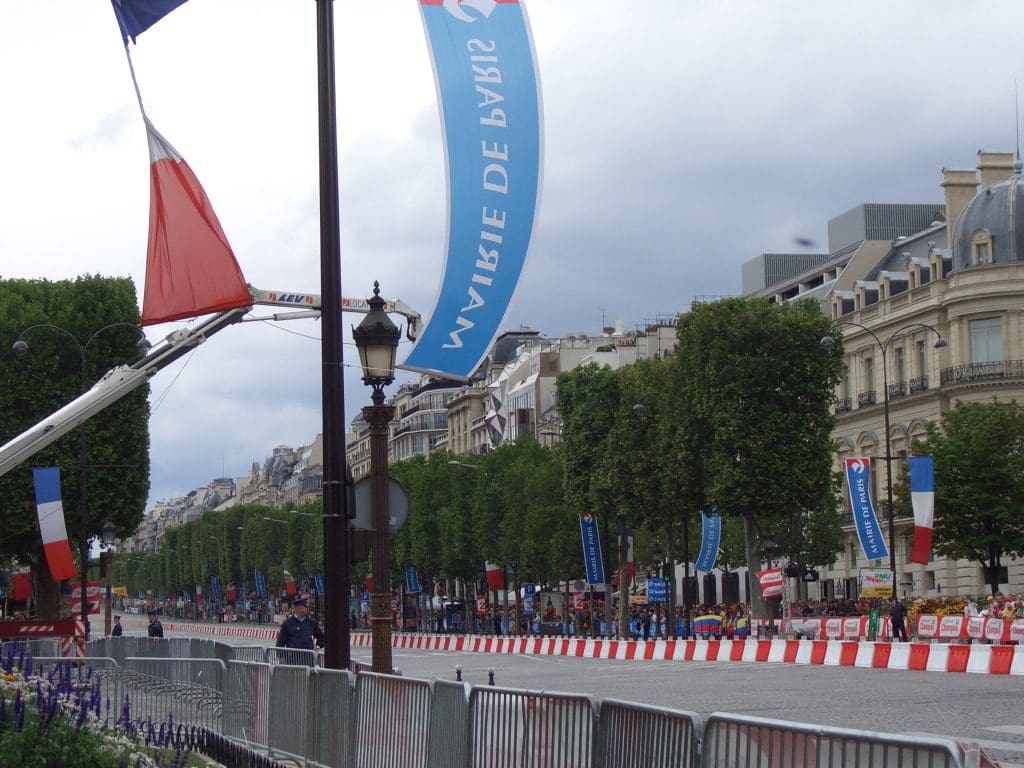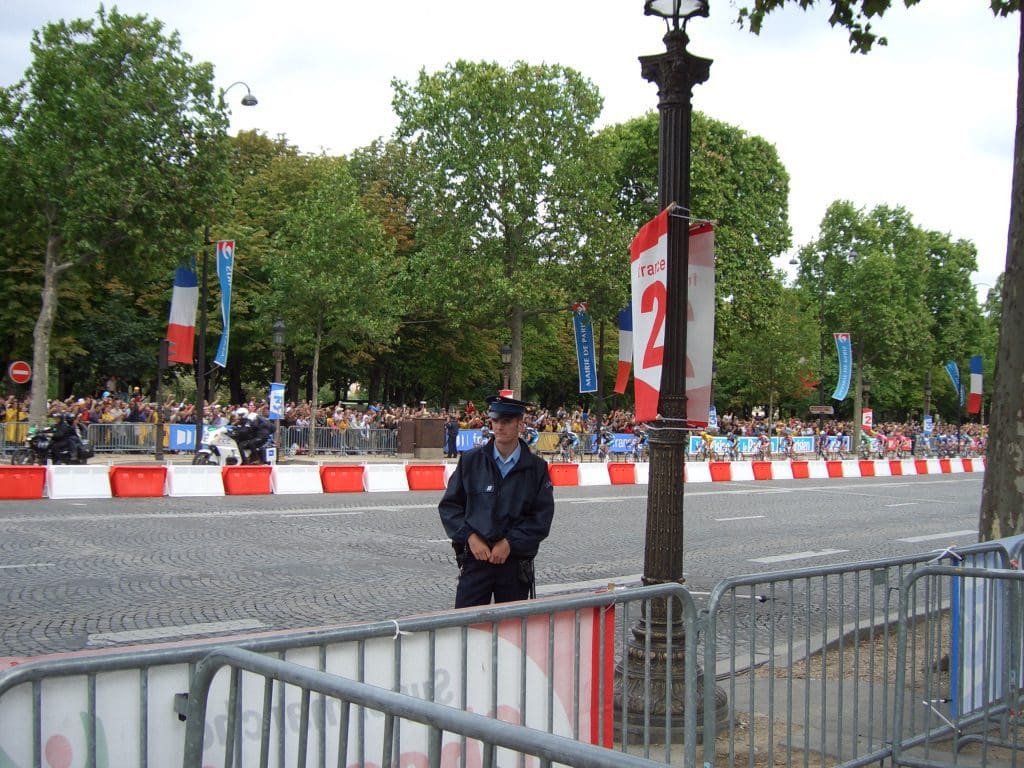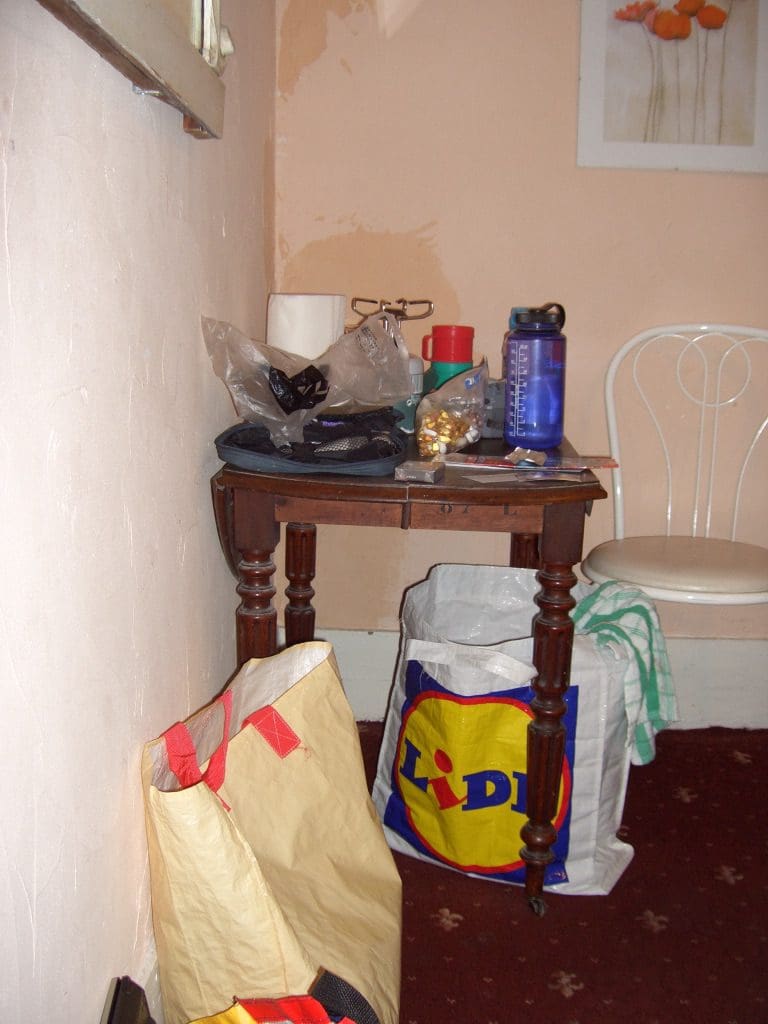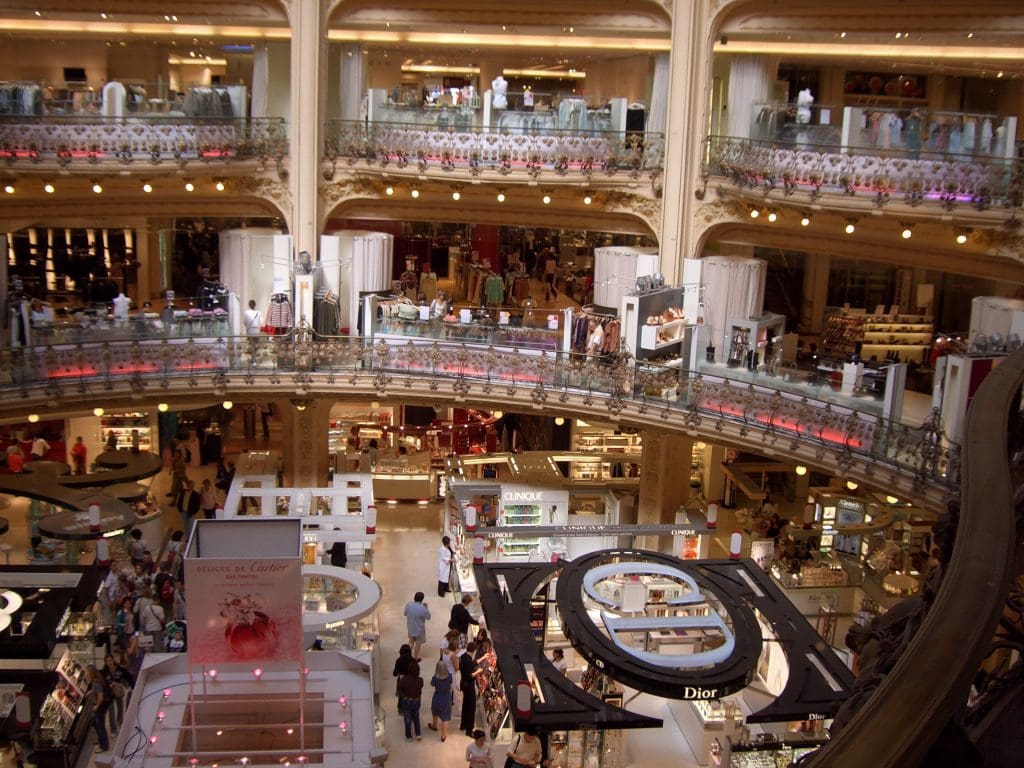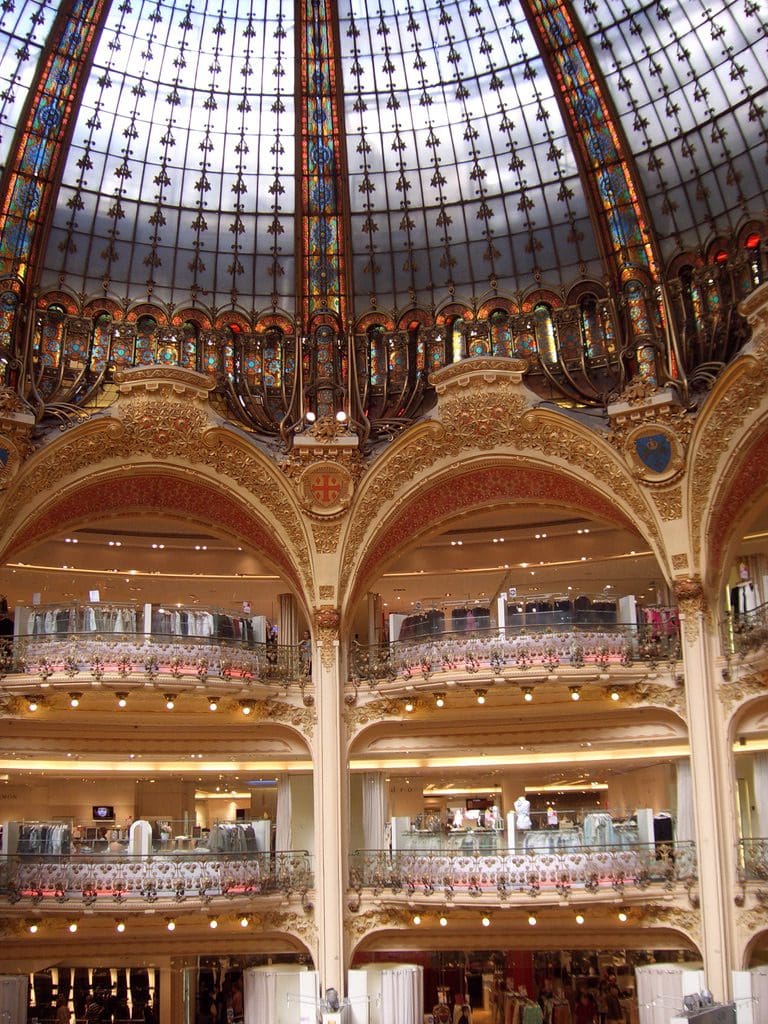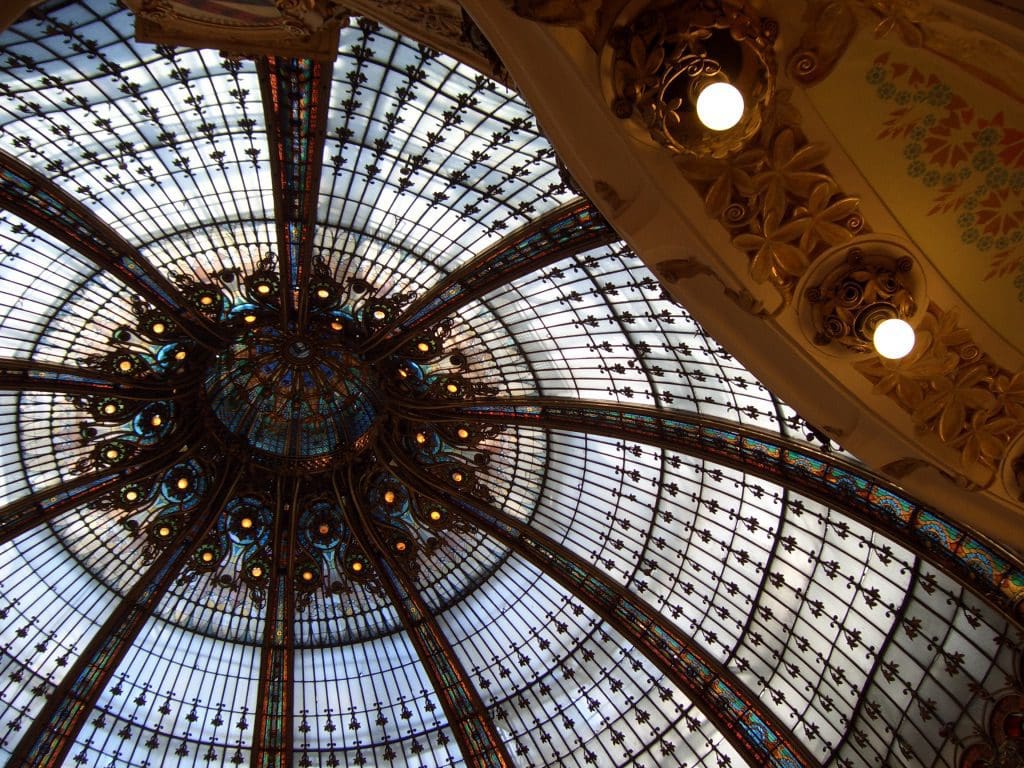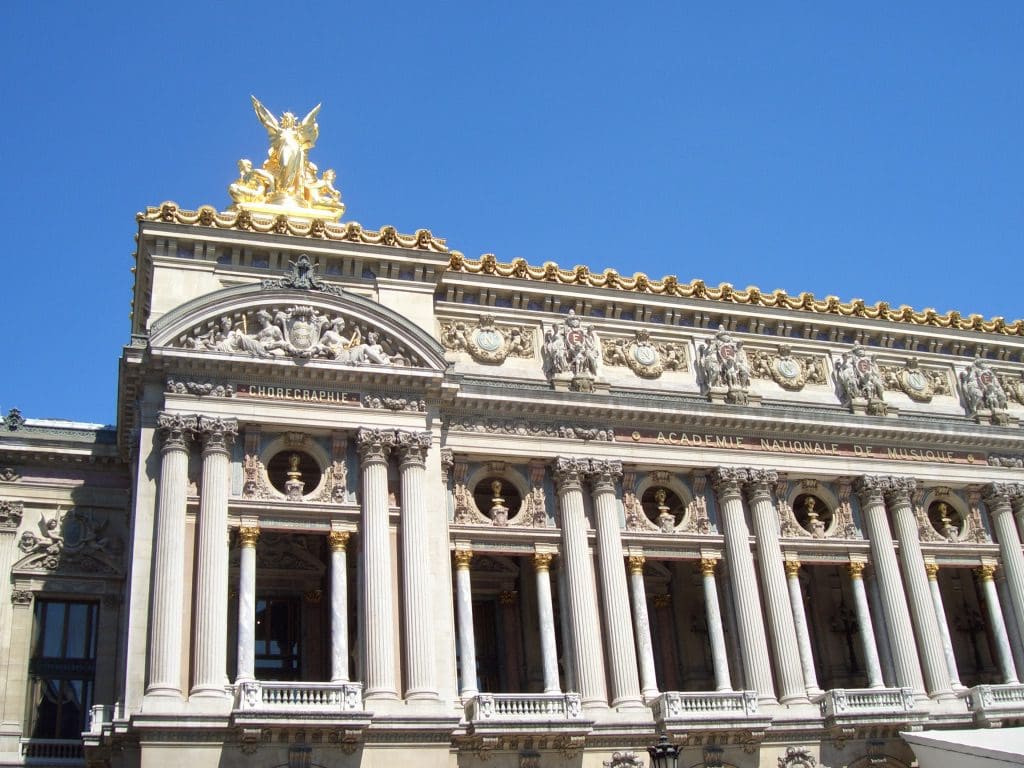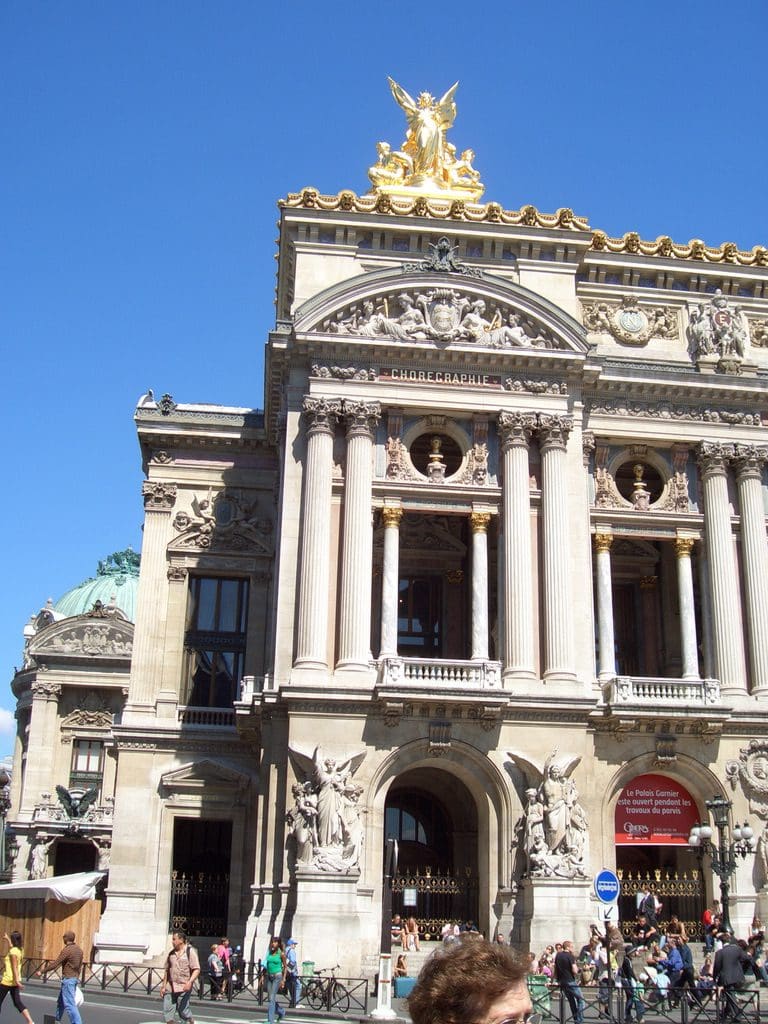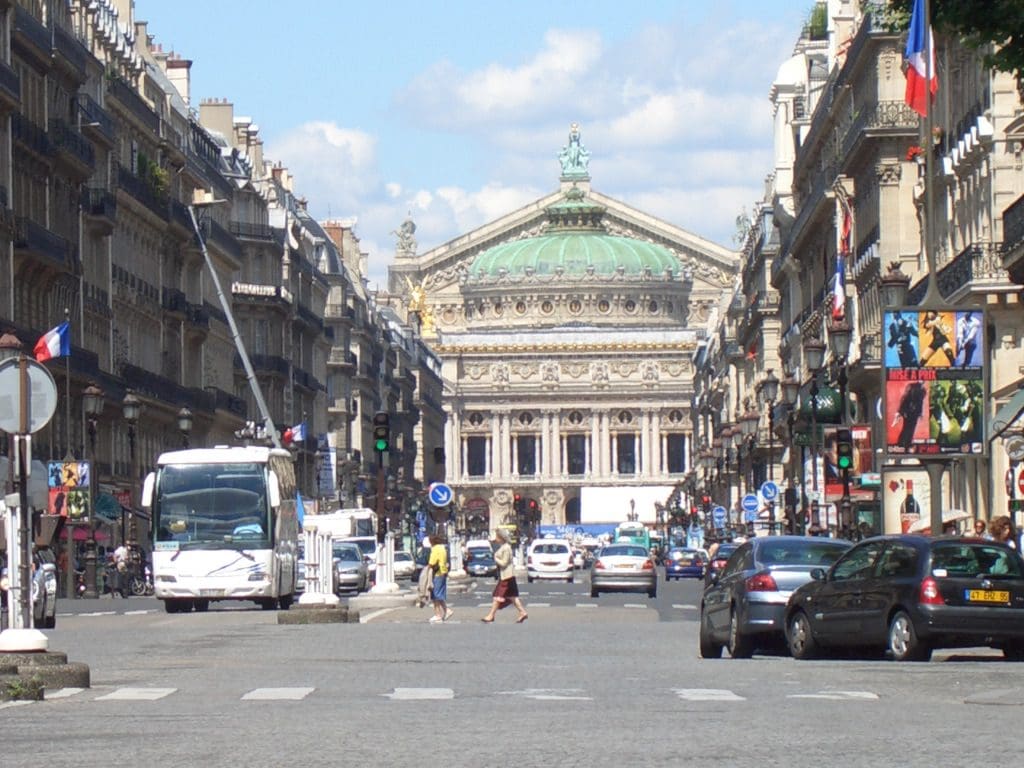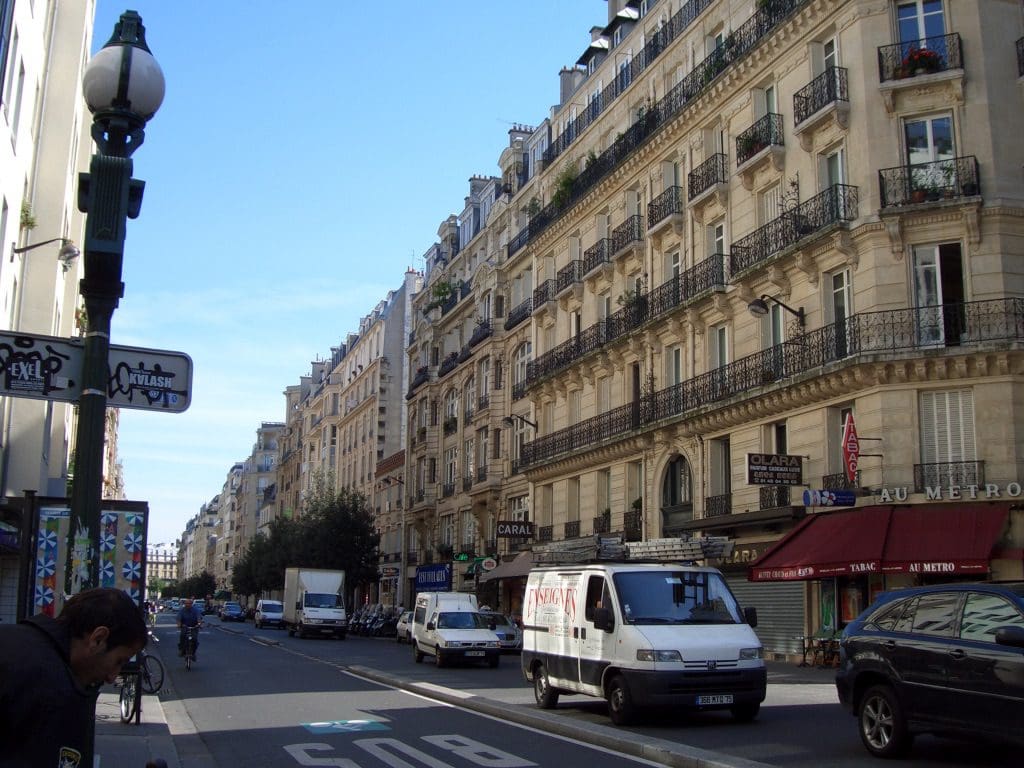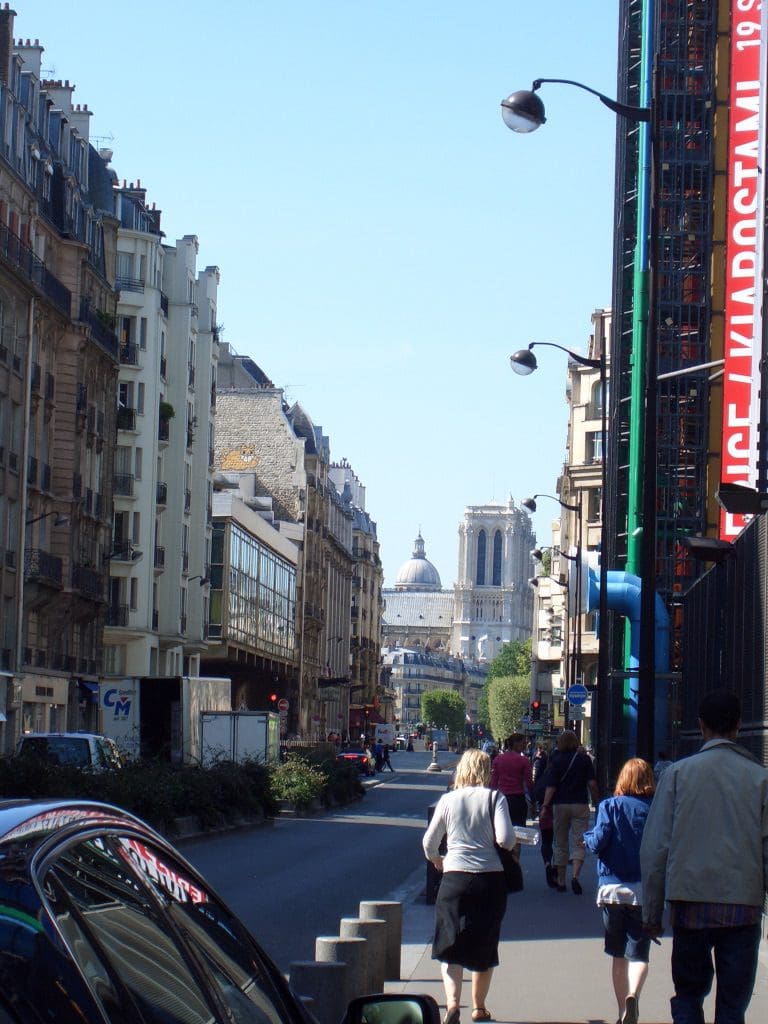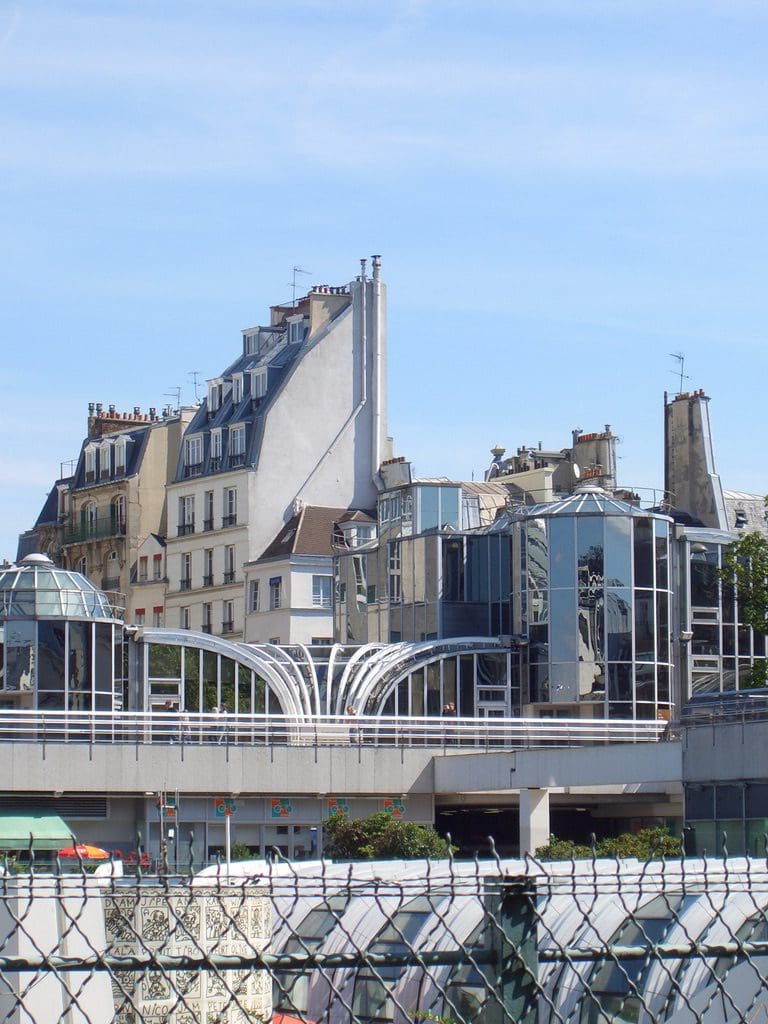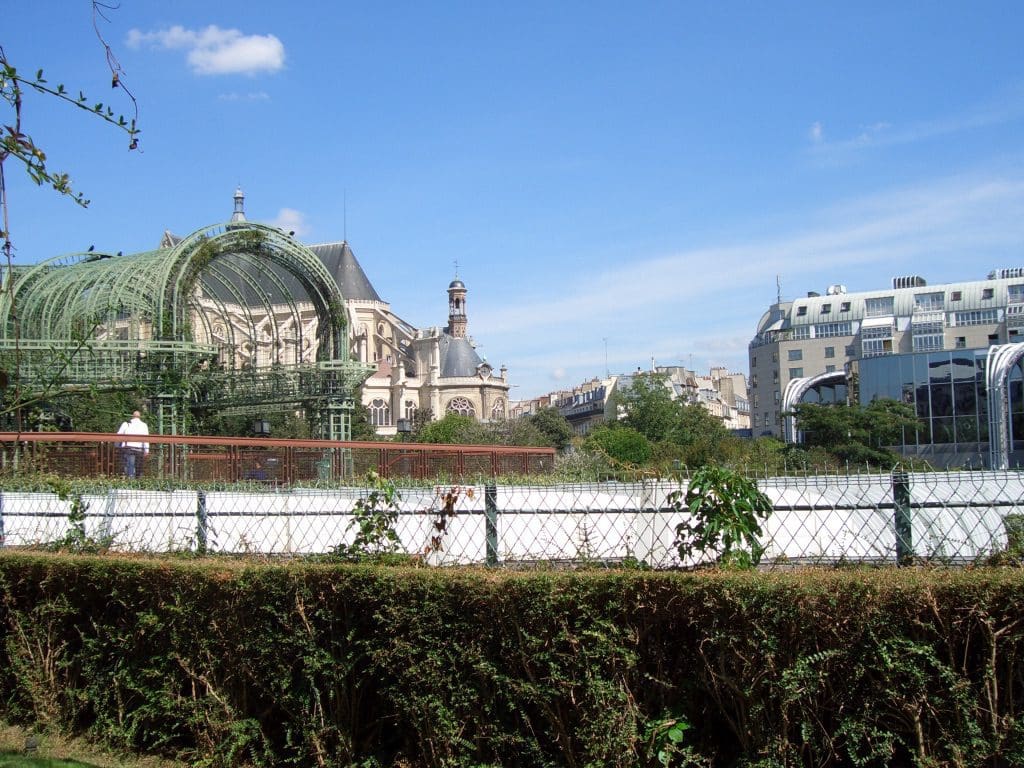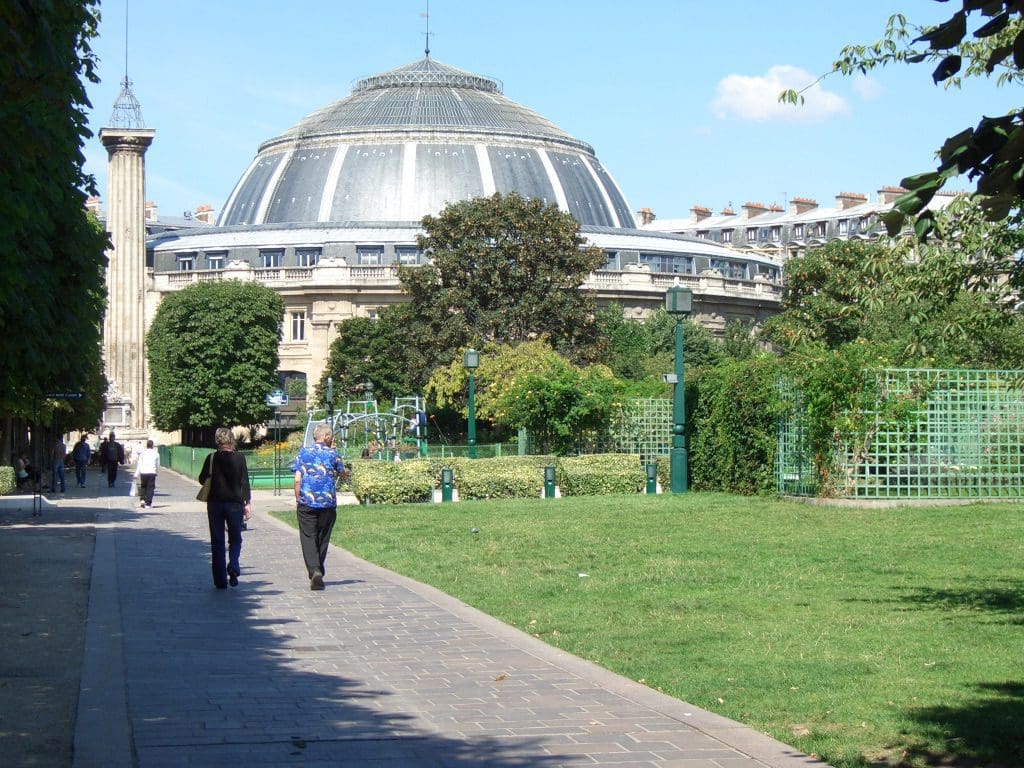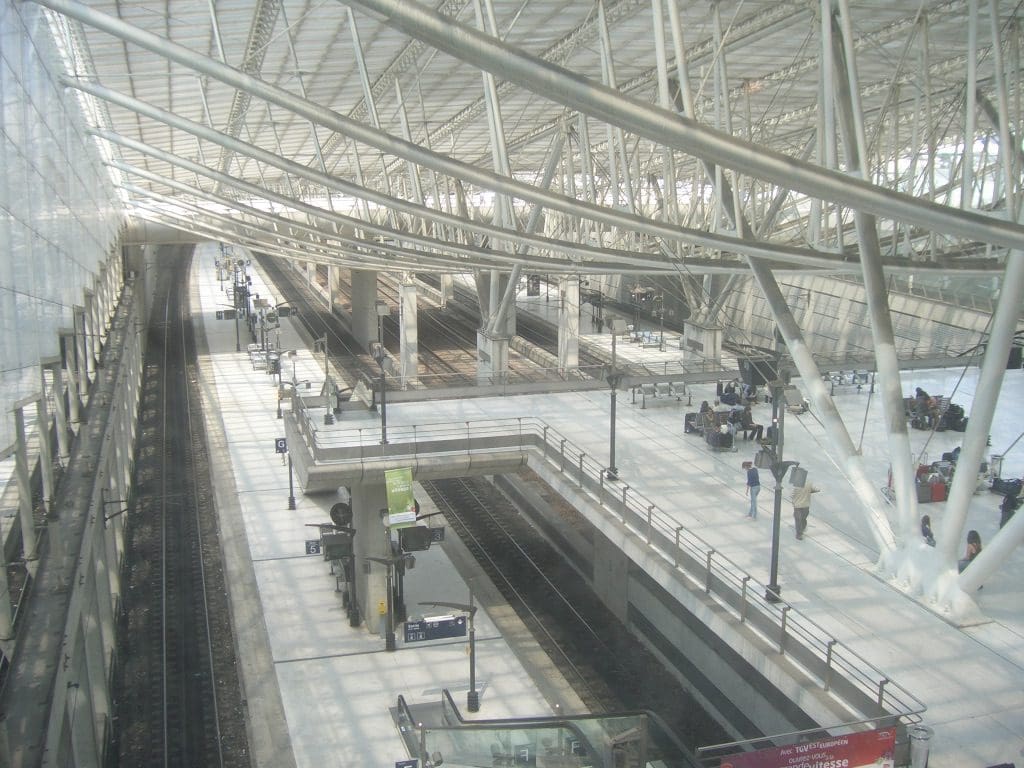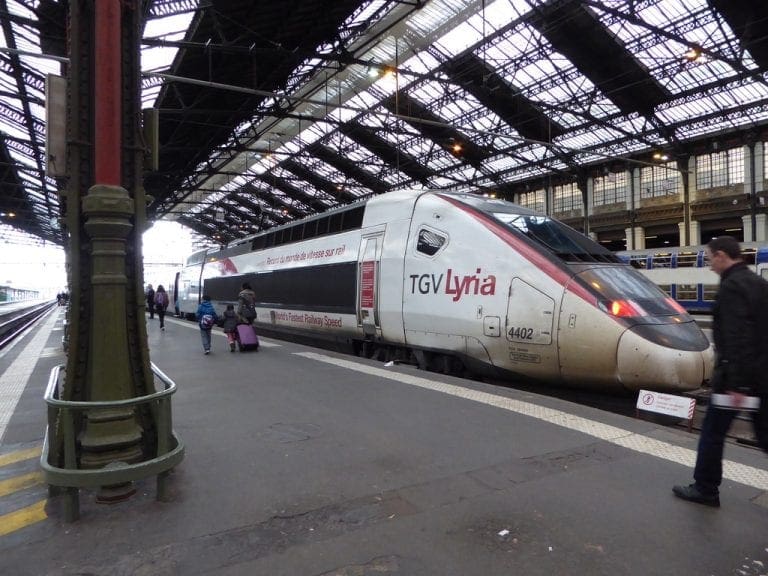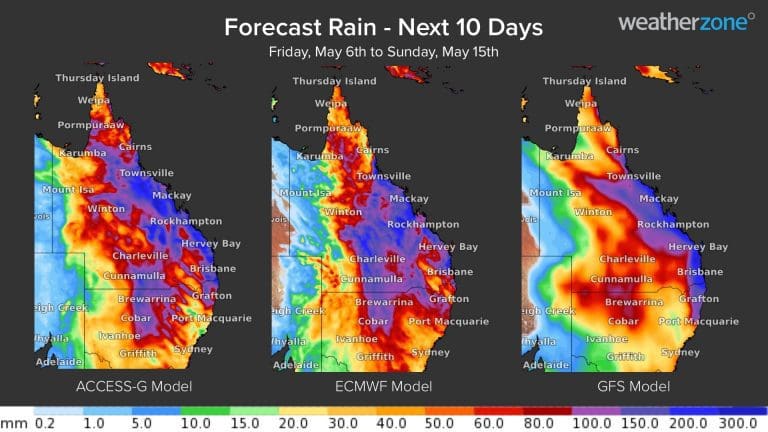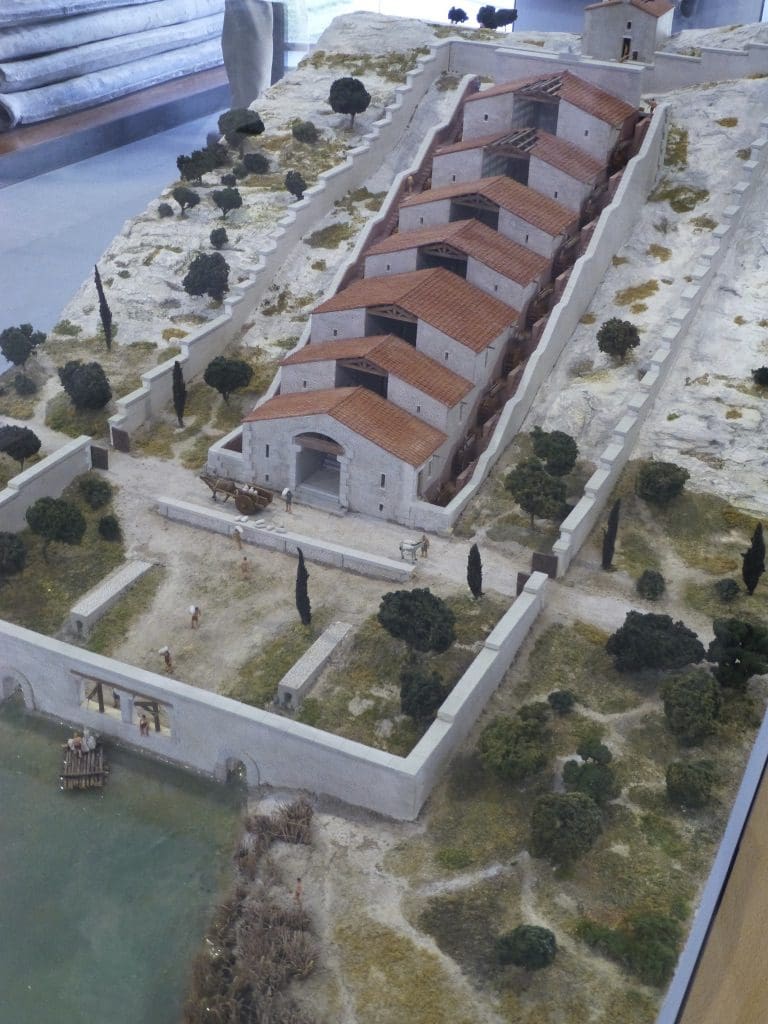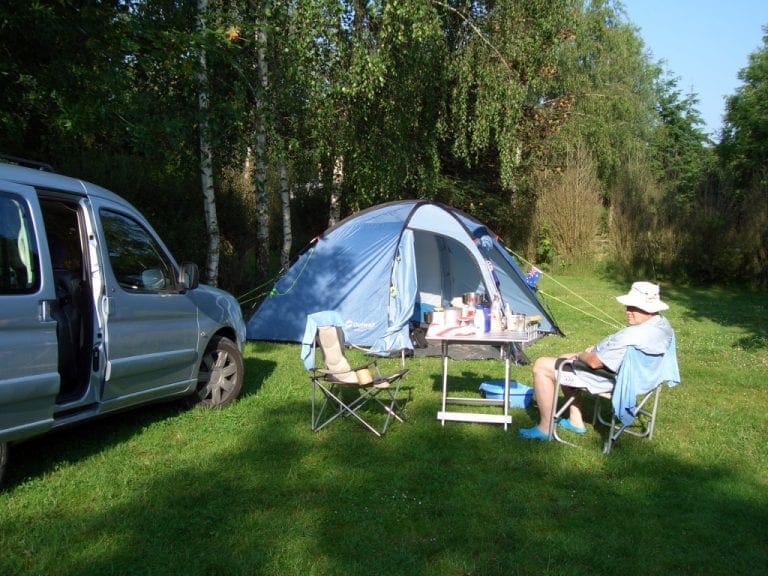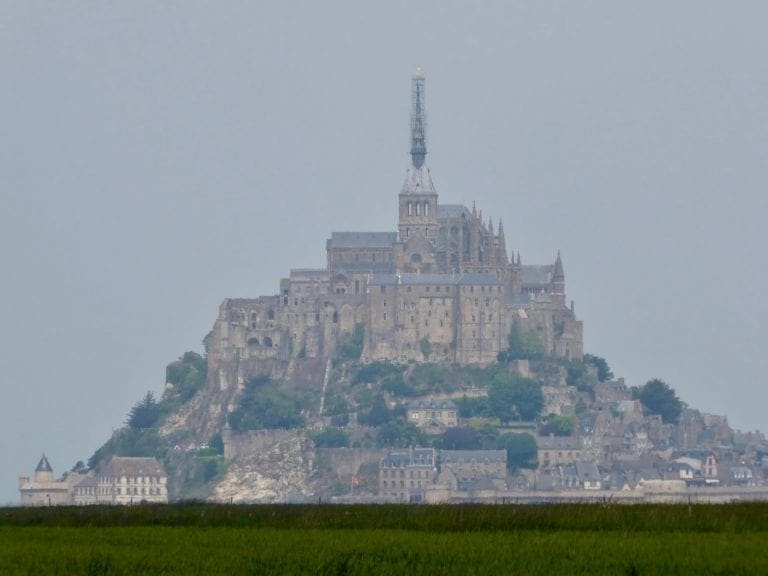Europe 2007 Paris
26/7 We dropped off the car and are now in a Paris Hotel. We used the Girl to navigate to the Hotel which is one street away from the Louvre on a very narrow one-way lane (with no parking). We parked in the middle of the lane and carried the suitcases up 4 flights – holding up traffic. Then we reset the navigation and headed to Charles de Gaul Airport Terminal 3 and dropped off the car. No hassles anywhere. The Girl did quite well, only losing satellites when the streets got narrow. We tried to drive as close to the middle of the wider avenues to give her the best chance. Geoff drove and Helen navigated with her eyes stuck out past the front of the car searching for street names and signposts. We found the place to return the car because of all the red number plates – certainly more cars there now than there were in early April. Just before the car return place, we drove past the Total service station that we had not been able to find in April. We had done 13,500 kms in the car, about 10,000 of those were in France. A painless drop-off. They wrote down the number of kilometres we had driven and we signed a form. There were no flies on the young fellow who drove us from the TT drop off to the station – sharp as a tack. We thought this was going to be a very difficult day – but no probs at all. Despite what we had heard unanimously, the French are very good drivers. We got through that maze in Paris twice without incident. (The biggest problems the French have as drivers, is their bad habit of driving 10 cm from the car in front – usually you can’t see the bonnet of the car behind let alone its headlights.) We think the Poms have spread this rumour about bad French drivers – and they are equal worst drivers in Europe. To add to their problems of being on the wrong side of the road, the poms have no idea what to do at roundabouts. Their equal bad driving cousins are the Germans who drive too fast for the road conditions – always.
We caught the train back into Paris (16.40 euro) and found the hotel again with only a small walk around the block. (We still cannot place the hotel exactly on the map.) We then went for a walk past the Louvre and through the Jardin Tuileries. A most beautiful city. We think because of the space allocated in the centre and the height restrictions (no tall buildings). Thousands of tourists, like us, walking around with a map in one hand and a camera in the other. It would be impossible not to be in someone else’s photos.
27/7 A long day. We first walked through the archways of the Louvre and over the Seine to the Museum d’Orsay to see the impressionists. When we were here 35 years ago they were in the Louvre. They are now in a huge converted railway station. Too big to see everything in one visit but an amazing exhibition space. For some reason, not as enjoyable or inspiring as the previous presentation. From there, we walked via the Invalides district to the Tour Eiffel. The number of tourists there was unbelievable. This is really a huge impressive structure. (We two mathematicians especially like the names of statisticians – Cauchy, Poisson, Laplace – and physicists – Coulomb, Ampere – whose names ring the first platform. The queue to go up was about an hour long and while we were waiting a sign changed to show that the top was closed. So, we went back to the hotel via the Metro. The Metro is certainly very cheap – 10 tickets to anywhere cost 11.10 euro. Trains are at most 10 minutes apart. (So far, most times we wait less than 2 minutes for a train.) Clean, not too crowded. Still thousands of tourists walking around with a map in one hand and a camera in the other.
28/7 We walked to the Island in the Seine to look at the Notre Dame Cathedral. Another impressive edifice with a huge line of tourists waiting to go in. The line for going inside was a good 100 metres long and shuffling, to go up the tower was 75 metres long and looked like it was camped there. We took the Metro to Blanche station. The Moulin Rouge is just over the road from the metro. From there, we walked up to Monmartre where the Bohemian district was full to bursting with tourists. Many buskers and street entertainers everywhere. Watched a fellow in a wheelchair making little dog key rings. From there we walked down the hill and caught the Metro to the Arc de Triumph – again packed with tourists. And here, for the first time we were hassled by a few women aggressively begging. Helen told them to ‘bugger off’.
The hotel we are in does not have power points in the room. It is a very small hotel and we are in the 5th floor up a very narrow circular stairwell. The room is pleasant enough. We went to dinner at the Thermadore less than 50 metres from the front door of the hotel. Actually there are at least 10 good street-side restaurants within 50 metres of the hotel door. This one was excellent. Good friendly service – and that is the point, French restaurants are almost invariably very friendly – helpful, often cheeky staff. When we buy things, we have only found friendly, helpful staff. Where are the rude French we had heard about? (Just the one rude one so far.)
The size of the city of Paris has surprised us. The ring-road that circles the city and its arrondissements has a radius of about 4.5 km. That means all of central Paris city would fit between our place at Cherrybrook and Epping. Mind, it is 5 to 8 stories high and criss-crossed by road and rail. But, still, not big. The main attractions are all within walking distance. The suburbs extend far out beyond this ring road.
To help get around, there are public bicycles (CitiVelo). Stands every few hundred metres. Put your money in the slot and you have hired a bike. About 1 euro for ½ hour.
29/7 The day of the finish of the Tour. An extremely long day. After a latish start, we headed to the Eiffel Tower to see if we could get up the thing before the Tour. We were a bit late. We got there at 9:50am. The place was packed. The lines were at least 100 metres long and they were threatening to shut the top – again. Tours of 100 plus people were being given priority – again. We re-grouped and headed off to see the Tour. We knew it finished after several laps of the Champs Elysees but in our haste to throw stuff out, the exact times had been consigned to the bin. Never mind, we knew we had to be there early. We headed off in a likely direction (in drizzle) and found ourselves in a beautiful display of photos of animals – Alive by goodplanet.org, the same bloke who did ‘Earth from the Air’. Continuing on, we then found ourselves walking along the street with many big name fashion houses – Prada, Dior, most were there. Probably expensive just to breathe the air in that street. The one hotel in the 500 metres had a collection of cars none of which was less than A$150,000. There was , however, a public toilet at the end of the street. These loos are few and far between and you don’t pass one by just because you don’t want to use it then. Go while the going is good, it may be hours before the next.
We found a spot to watch the Tour on the Champs and lined up at just before 11am. (We found a loo on the way, 500 metres back – this is important.) And waited. We were approximately right about the times. By 12 noon, the barricade had filled up with people. The caravan went through on time – but did not hand out anything. Disappointing. One of the fun things about the Caravan in the towns and roadside was begging for loot. In Paris, they just drive past. All very tame and disappointing. We were expecting all kinds of entertainment. There was none. Just barricades and Gendarmes. On the opposite side of the road from us was a group of Aussies with flags. They were very entertaining. The Gendarmes went over to try to control them. Mistake. They had the Gendarmes taking photos of them and arranging their flags. The Gendarmes withdrew. The Aussies played up. But that was the only entertainment all day. The Tour went round many (?) times and ended in a finish that we could not see. We saw them go past each time and waved, clapped and took pics. We stood in the same place for 7 hours. Not a dunny in sight except 500 metres back down Prada street. We were surrounded by French, poms (over for the day), Yanks (French teachers on a course). This was a very boring day. When the crowd dispersed, we walked the 3 km back to the hotel via the other side of the Seine because the roads were all closed.
So what about the Tour? If you want to see it and how the tactic play out, it is better to se it on TV. The end of stages (at least on the flat) are over in seconds. The Paris finish is just a long day standing in one place. Road-side in the country is best as there is something to do, and you don’t have to stand in the same spot for 7 hours. If you want to see the Tour, watch it on TV.
Paris vs France. Paris is like another country. It just happens to be in France. The food (while still excellent) is not as good as the provincials eat throughout France. BTW, we have as good or better fresh produce in Harris Farm or Martellis. We do not have the cheese (or the bread). Paris fromageries do have a lot of different cheeses, but so did the deli section of every big supermarket (E.Lecerc & Champion) we saw in France.
30/7 Report 16 was getting too long and we cannot find a place to send it from. There is supposed to be an Internet café ‘down the road and to the left’ but we can’t find it. Geoff is sitting in the stairway of the hotel typing this because there is no power point in the room. Helen is finishing off the packing. We think that all the gear will fit but we may be a touch heavy.
This morning the Gaz canister we bought in Denmark and used all the way around ran out. (It is the second canister, the first was bought in Dublin.) Lasted much longer than expected.
We went shopping today. Don’t laugh. We visited the huge Paris department store of La Layette that comprises three buildings. (There is another also in 3 buildings called Printemps). 6 floors – 3 of which were women’s clothing and accessories (one floor was ‘seductive clothing’). Some bigger names (Prada handbags) had their own little booths and security staff to keep the riffraff out.
A few comments about France and Paris. It is obvious that French women (especially Paris women) have a shoe fetish. Some very nice looking shoes – low heel, high heel. They would not be seen dead in court shoes. One of the things that makes Paris traffic move easier is the almost lack of traffic lights. Traffic just merges. People slow down and let cars, scooters and bikes in. There is probably a complete absence of road rage. There is certainly a “C’est la vie” approach to traffic – when you get blocked by a bus when you have a green light or when a bunch of pedestrians step out in front of you, just stop and shrug. Smart Cars are very common in Paris – more so than anywhere else that we have seen. They make up about 5-10% of the traffic. Their big advantage is their very small size which here means they can be parked in lots of small spaces. In Paris, although parking is metered, parking bays are not numbered. So, a small car can often fit between two other cars in a parking spot – sometimes sideways. They would be of no advantage in Sydney with its numbered parking places, and parking strictly between the lines. The number of restaurants in Paris is truly amazing. We have no idea how many restaurants are with in 50 metres of us here – at least 25. All good. Many already shut for the holidays. How many within 100 metres? No idea at all. And this would not be unusual – except we have several big buildings nearby that would reduce the number of restaurants. We have been wondering what is the ‘output’ of the restaurant. In Oz, the main output of the restaurant may be food. Here, the food is an excuse to sit and talk and form relationships. Plate turns seem to be a secondary issue.
Poms in France. The Poms are moving to France in droves. They have bought up big chunks of the Atlantic coast and Provence. It is the number one retirement destination. What does that say about the country they have built (England) that they now want to get away from. Of course, the European community has made it easier for them to move here. They can now desert the (probably) worst heath care system in the world for one of the best and probably the worst food for some of the best.
Streets in Paris are cleaned almost every day. Footpaths are hosed off about as often. This city looks clean. Yes, there is dog shit. There are on the spot fines for this but they don’t appear over keen to pick up after their pooch. But clean, yes. Watch where you walk. The place is also very quiet. Our hotel is very close to the busiest part of downtown. Yet there is almost no traffic noise and very little from the thousands of people who are living within a few metres of us. Very quiet at night. (Except, for the neighbours across the way who appear to live in a echo chamber – and laugh, sing, talk, scream at each other in Spanish.)
So what is it about the French. We think they are extremely tolerant but they clearly refused to have their tolerance imposed on. They have demonstrated time and again that they won’t be pushed around (by Europe or the Yanks). Their approach to the Moslem headscarfs is a case in point. ‘You can come here and fit in with France. We will tolerate you so long as you don’t impose. If you don’t like it, bugger off’. This approach needs a considerable force of will and powerful administrative tools to ensure that their tolerance is not swept aside by the new-comers. They show a very high strength of character as a nation. They are a very politically aware nation – the students still demonstrate, burn cars and tear buildings down. We wonder what would happen to politicians here who did not keep their promises. There appears to be a ‘look after the disadvantaged’ approach. (This is not communism.) There is certainly a considerable effort to make certain disadvantaged areas have more then their share of resources. Individually, they appear to take an interest in the few beggars on the street. Helen overheard a well-dressed young man asking a bedraggled-looking fellow if he had eaten and did he need anything. Kids are constantly being taught ‘right from wrong’ by parents and passing adults. It looks to be expected. We compare this with Australia where the kids are trying to tell Mum and Dad how to behave. We have seen very few badly behaved kids. The few hassly beggars appear to be Gypsies.
31/7 And we leave. We left the luggage at the hotel and took the metro to the Place de Bastille – where all the revolutions began – there have been at least 5 of them. There is actually nothing left of the Bastille – the most famous Paris monument that no longer exists. From the Bastille we set out to walk back to the hotel via Picasso museum (which we thought might be closed and it was) and the Pompidou centre (likewise closed on Tuesdays). We walked passed a place selling motor scooters: new 2,500- 4,500 euro; second hand 1,100 to 2,000 euro. Very cheap for a good unit to get you round town. Had a good walk and an excellent lunch just between our hotel and the Bourse. Yet another street-side restaurant. Then picked up the bags and walked the 150 metres to the metro and caught metros and surface trains out to the airport (16.40 euro for two of us). We were way too early, but we eventually got the bags through without any hassle (46.5 kg in total checked in. Geoff’s backpack carryon weighs 10kg). Now we wait for a flight to London.
2/8 We are back. A trouble free flight – just long. 32 hours from leaving the hotel in Paris with our luggage to arriving at our house in Cherrybrook. Our ticket had allowed only an hour in London to change planes and that was enough. The flight to Oz was with BA (code shared Qantas). Possibly a little more leg room than Qantas but not enough water given out. We landed 15 mins early at 5am after catching a substantial tailwind (over 200km/hr) that caught us up the ¾ hour we were behind time when we left Singapore.
We are back. Did we enjoy it? Yes. Sydney might not have changed much while we have been gone, but we have.
